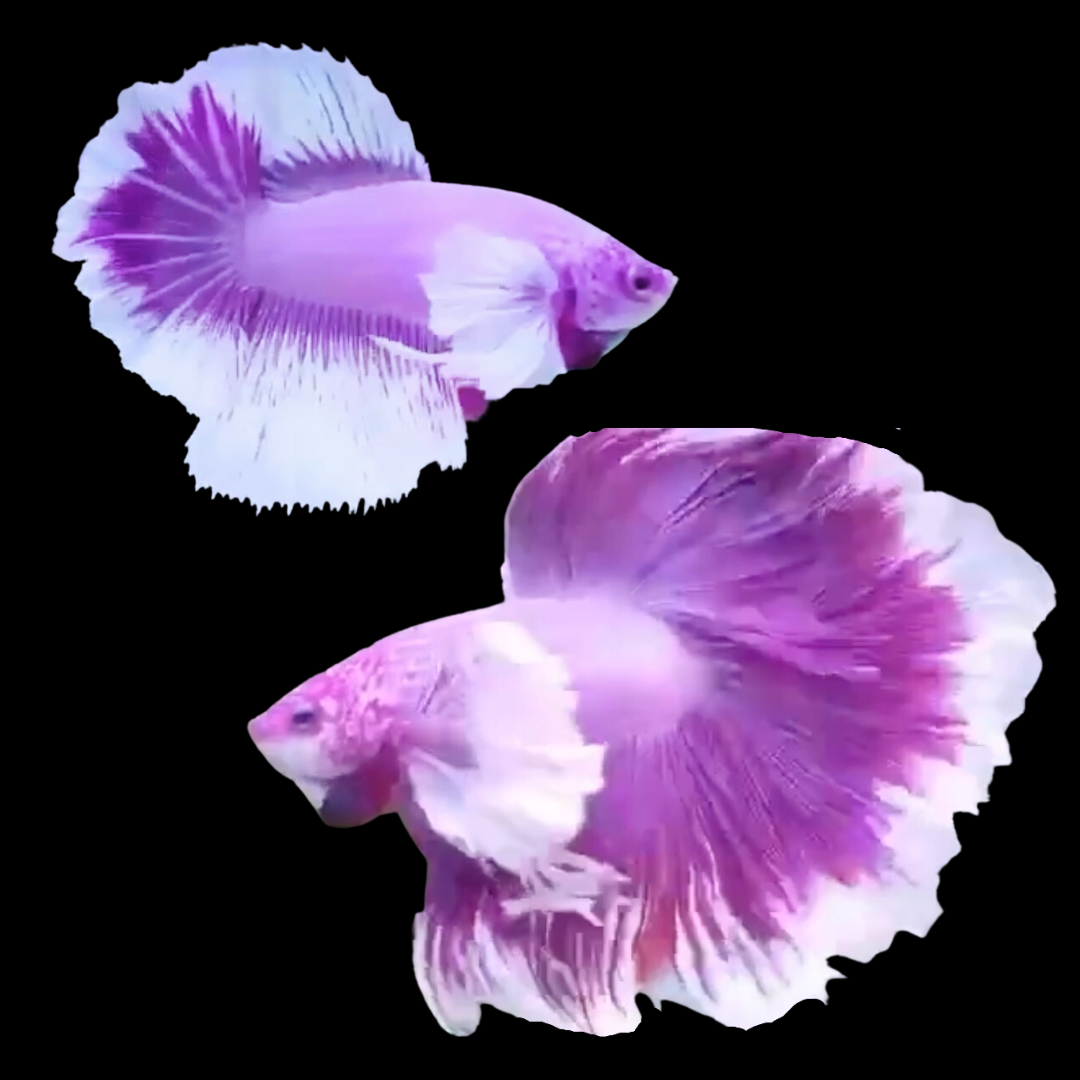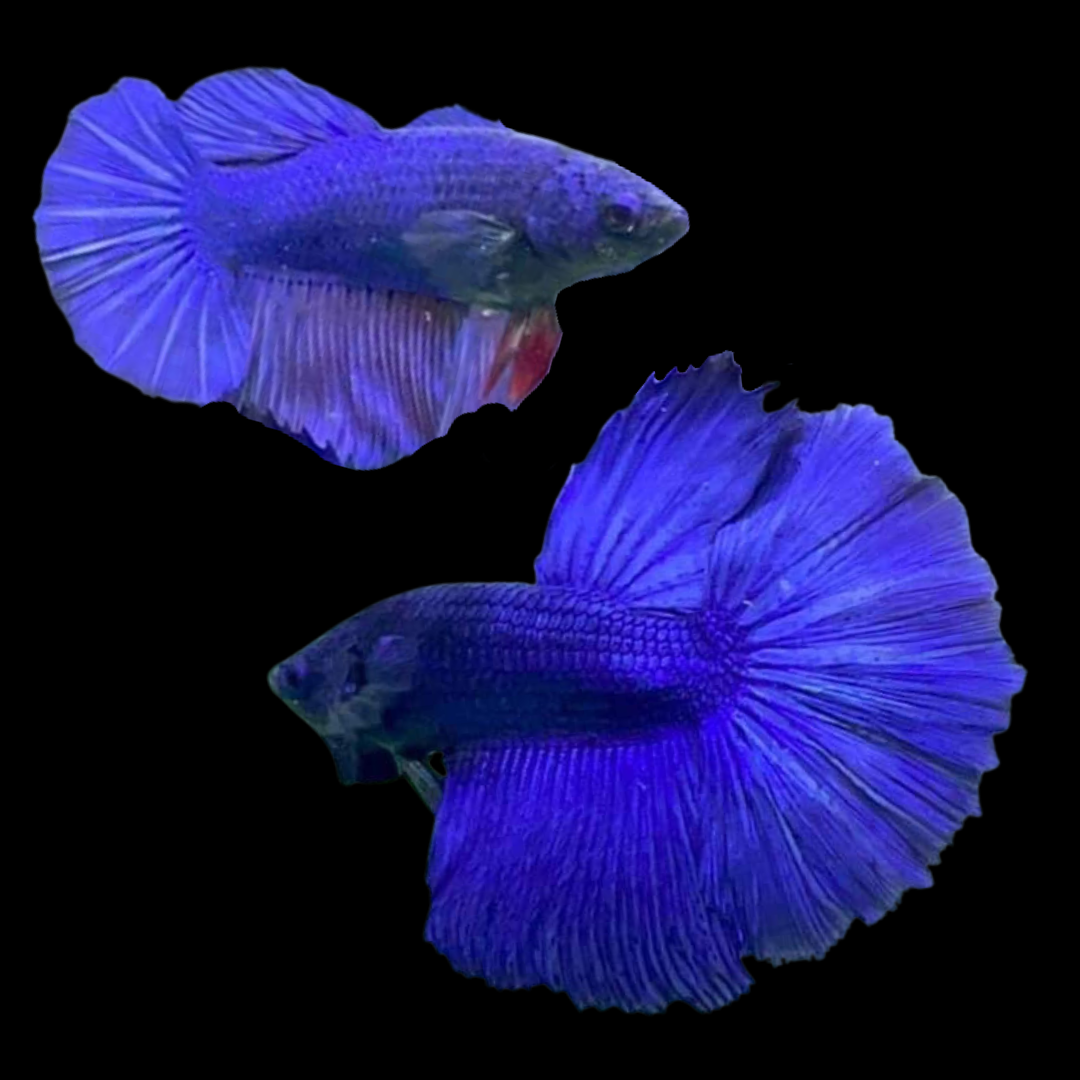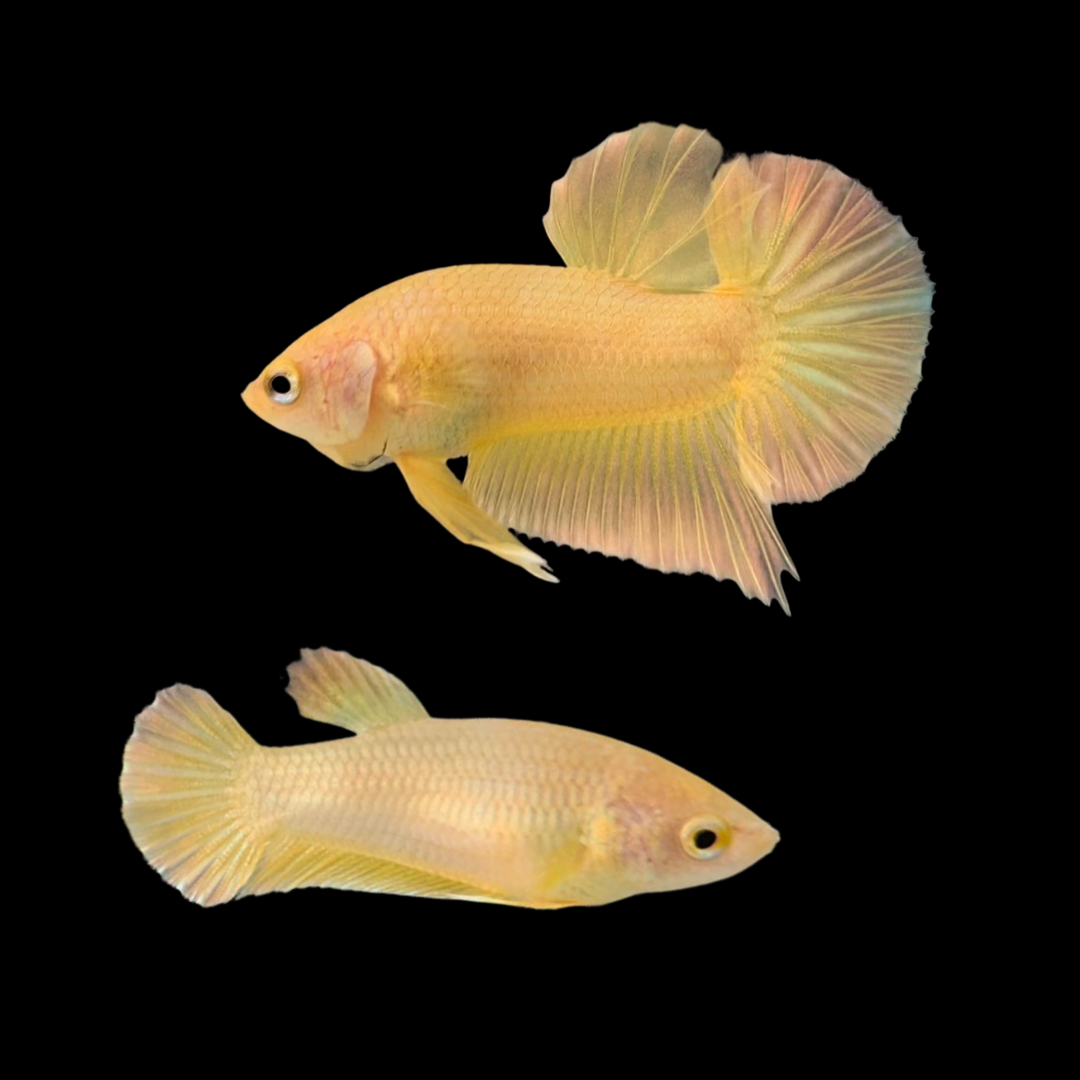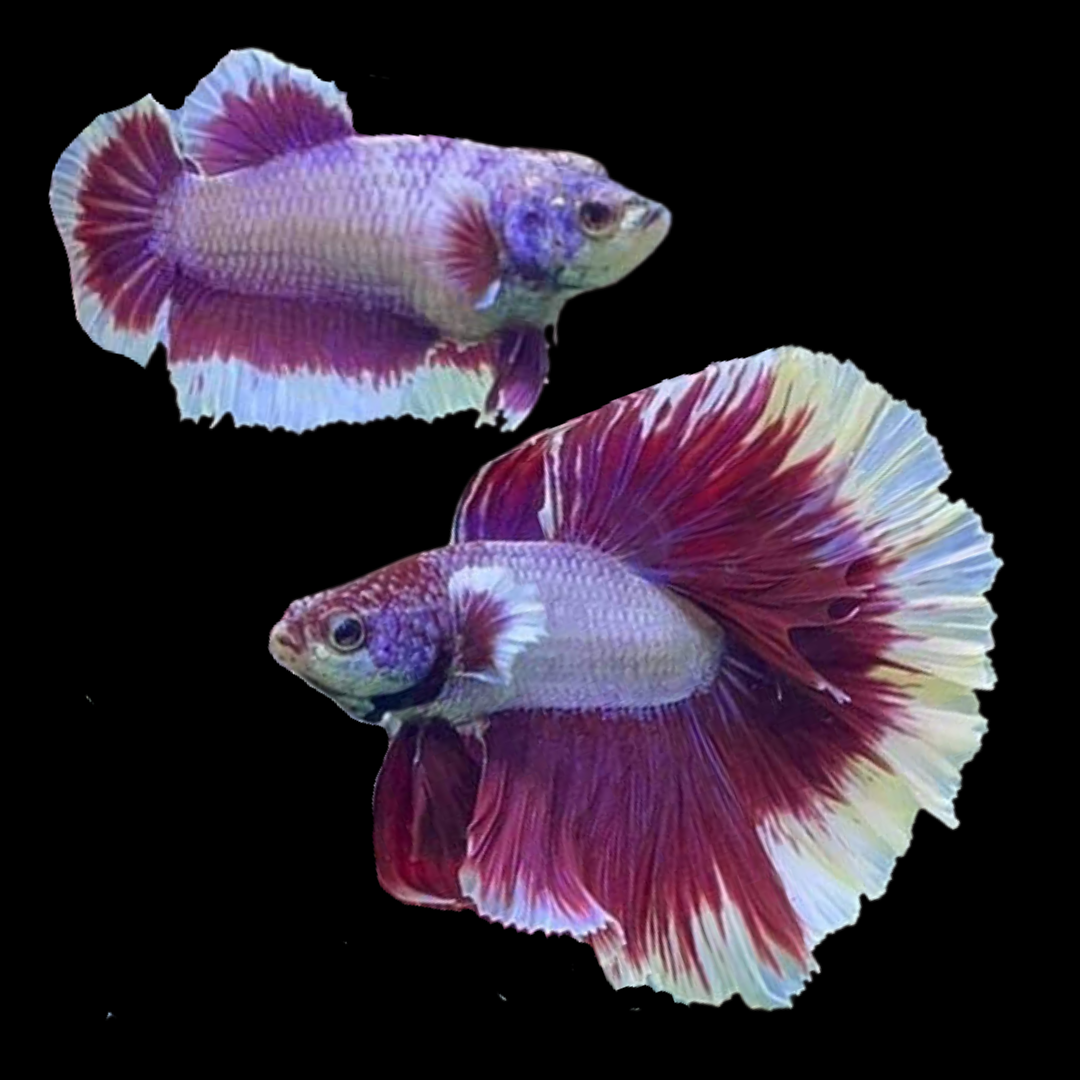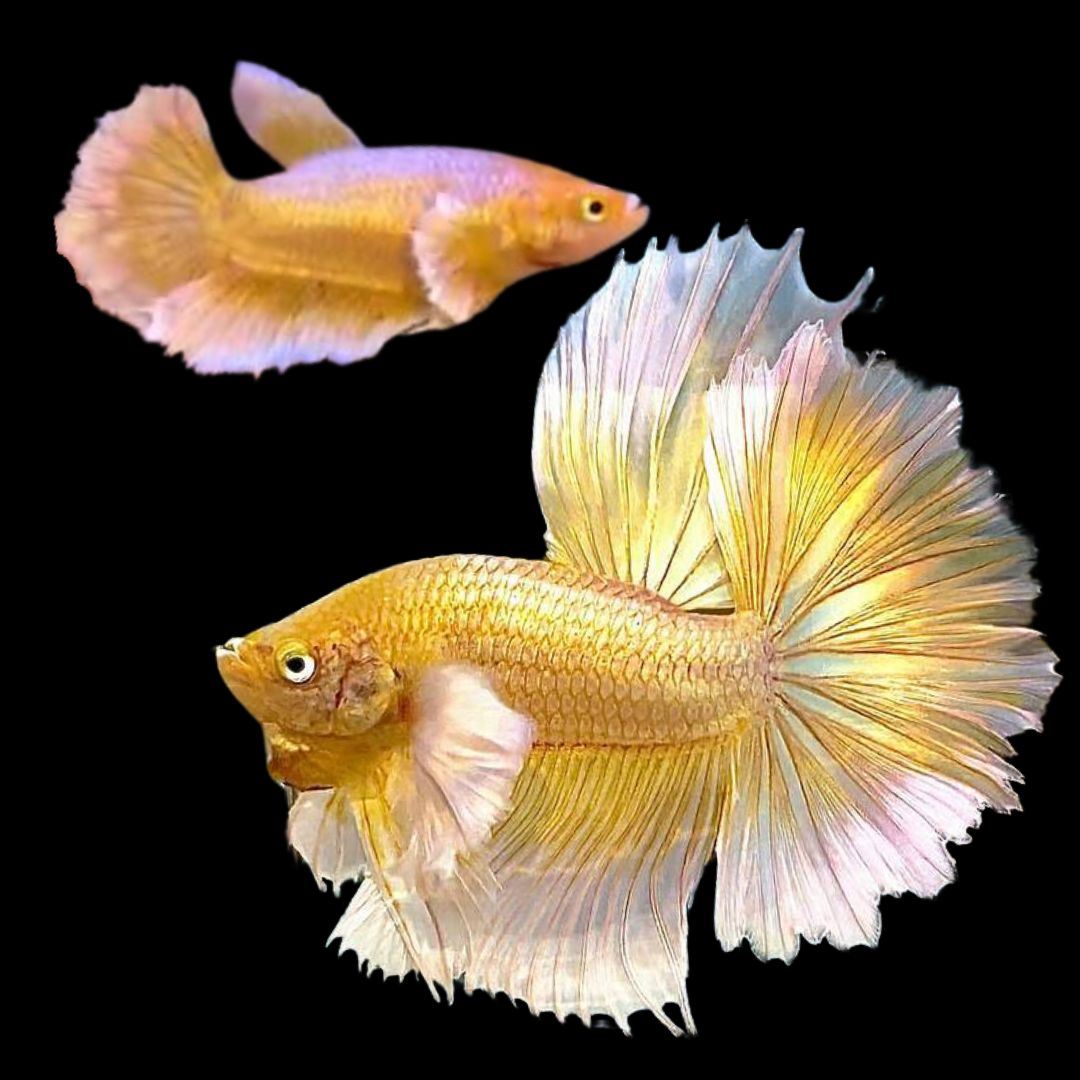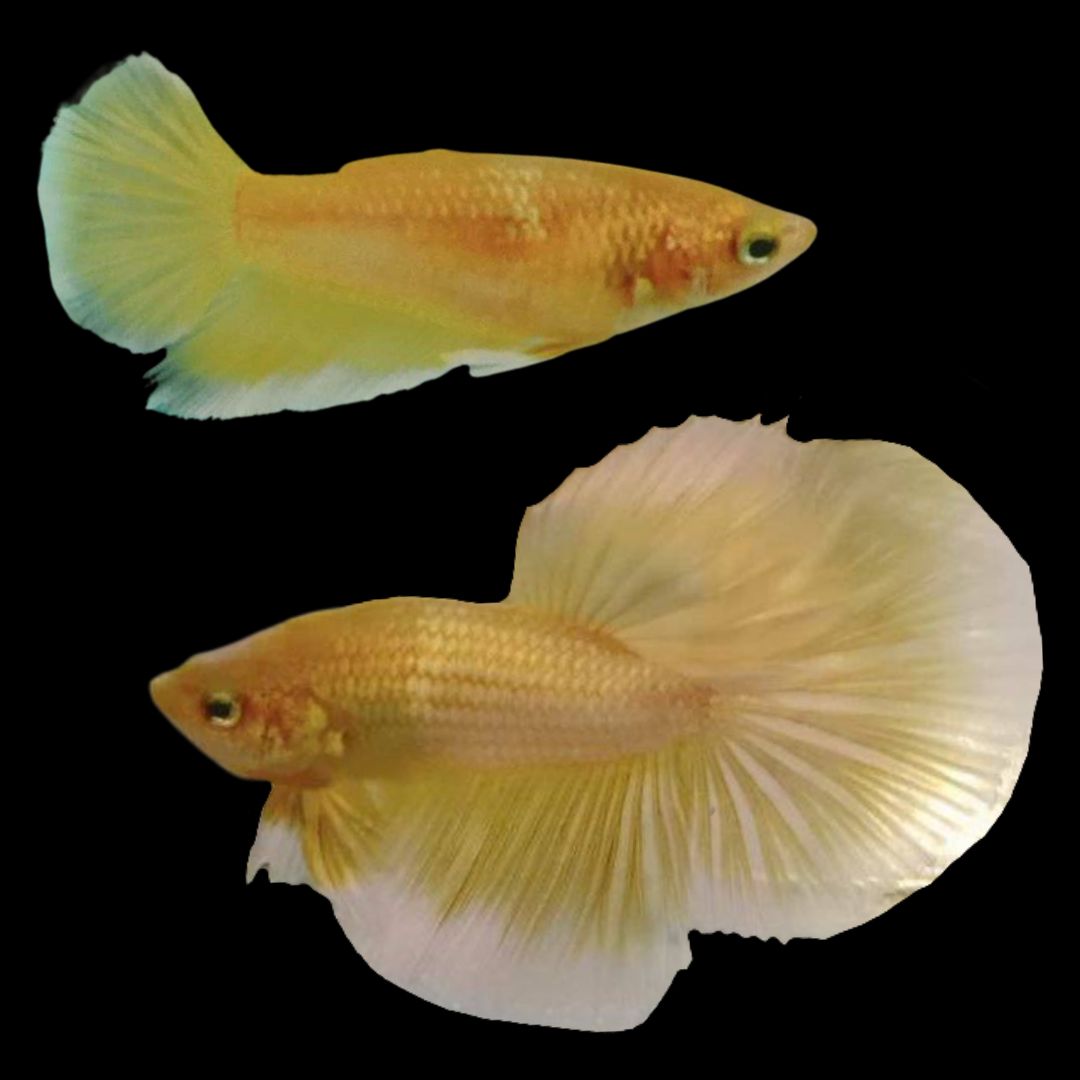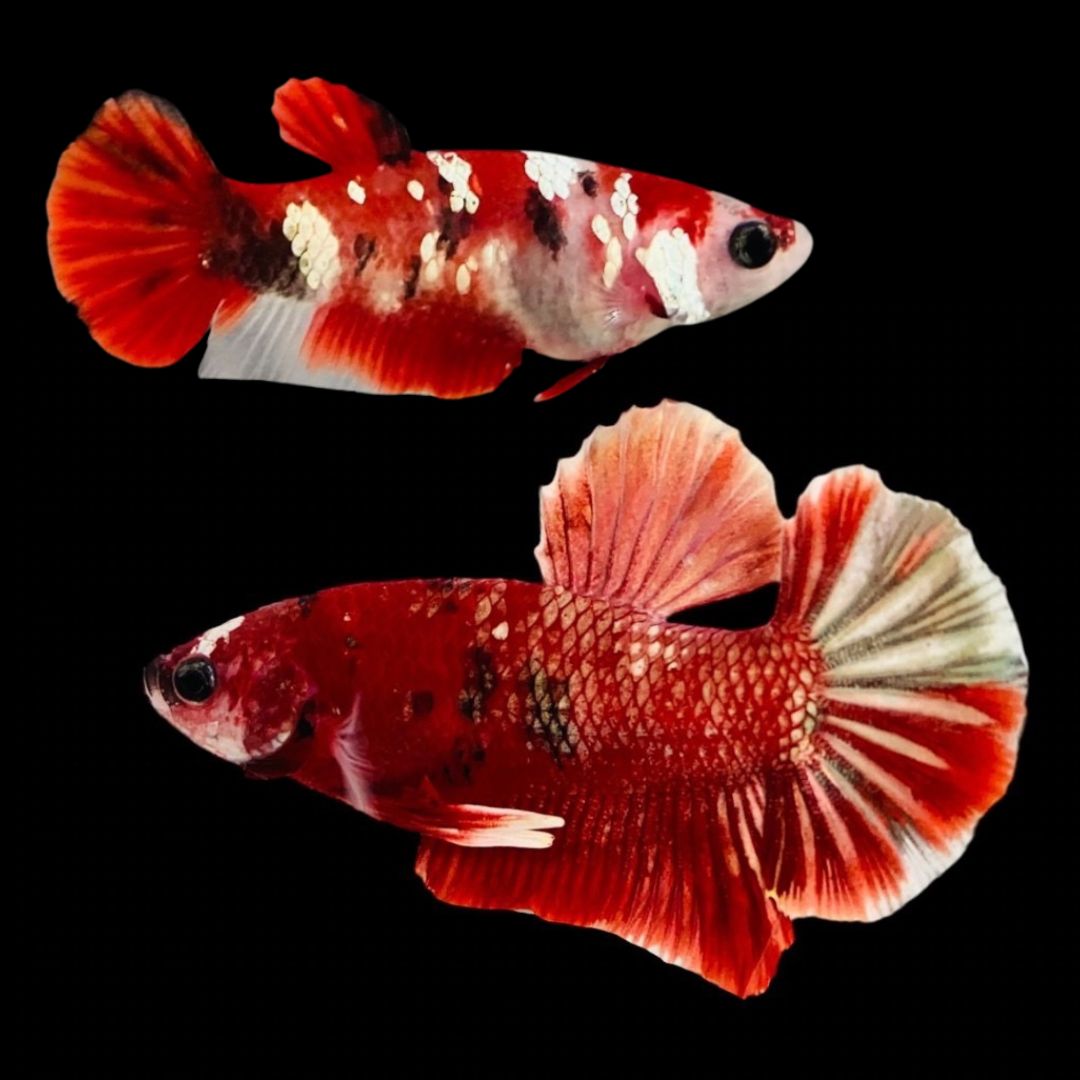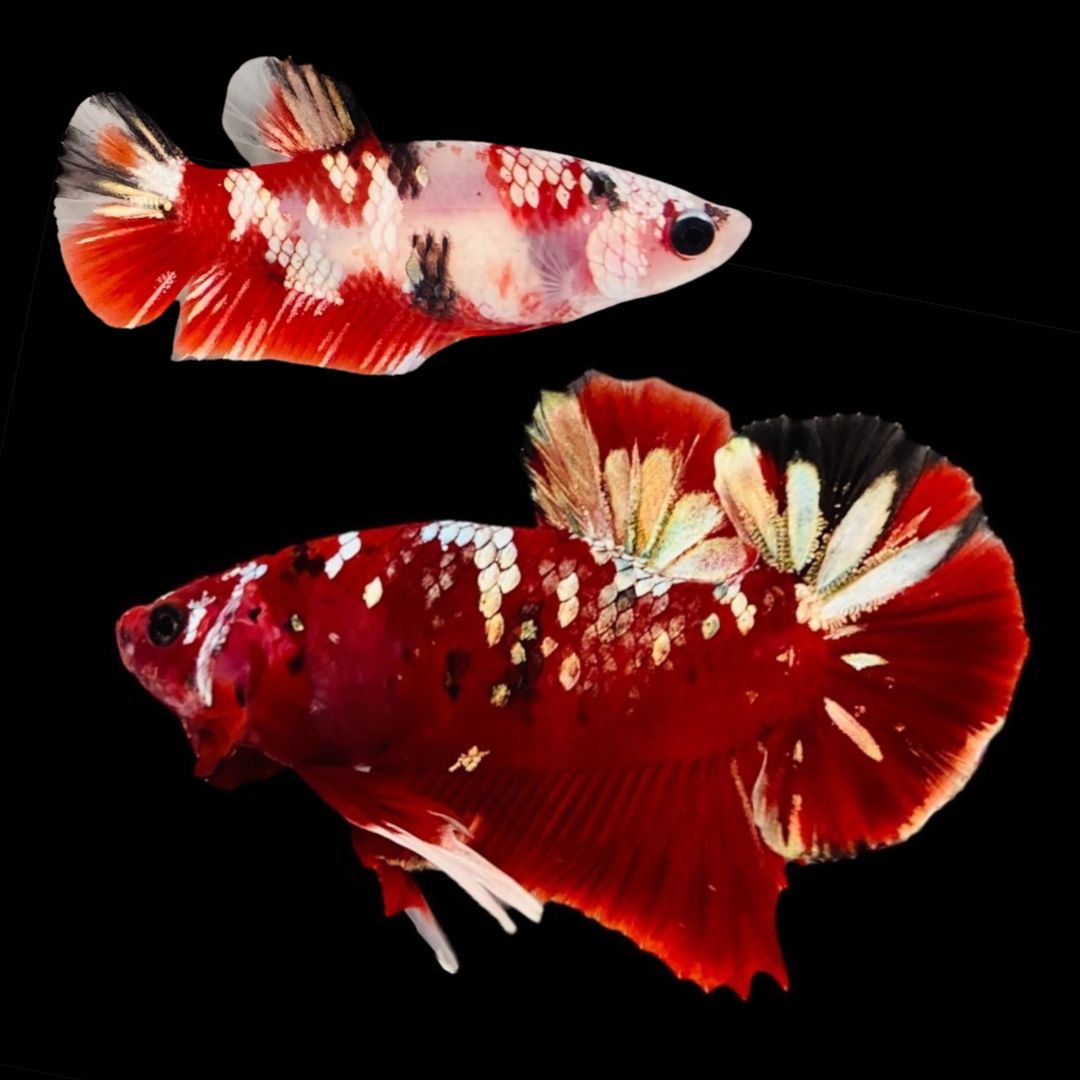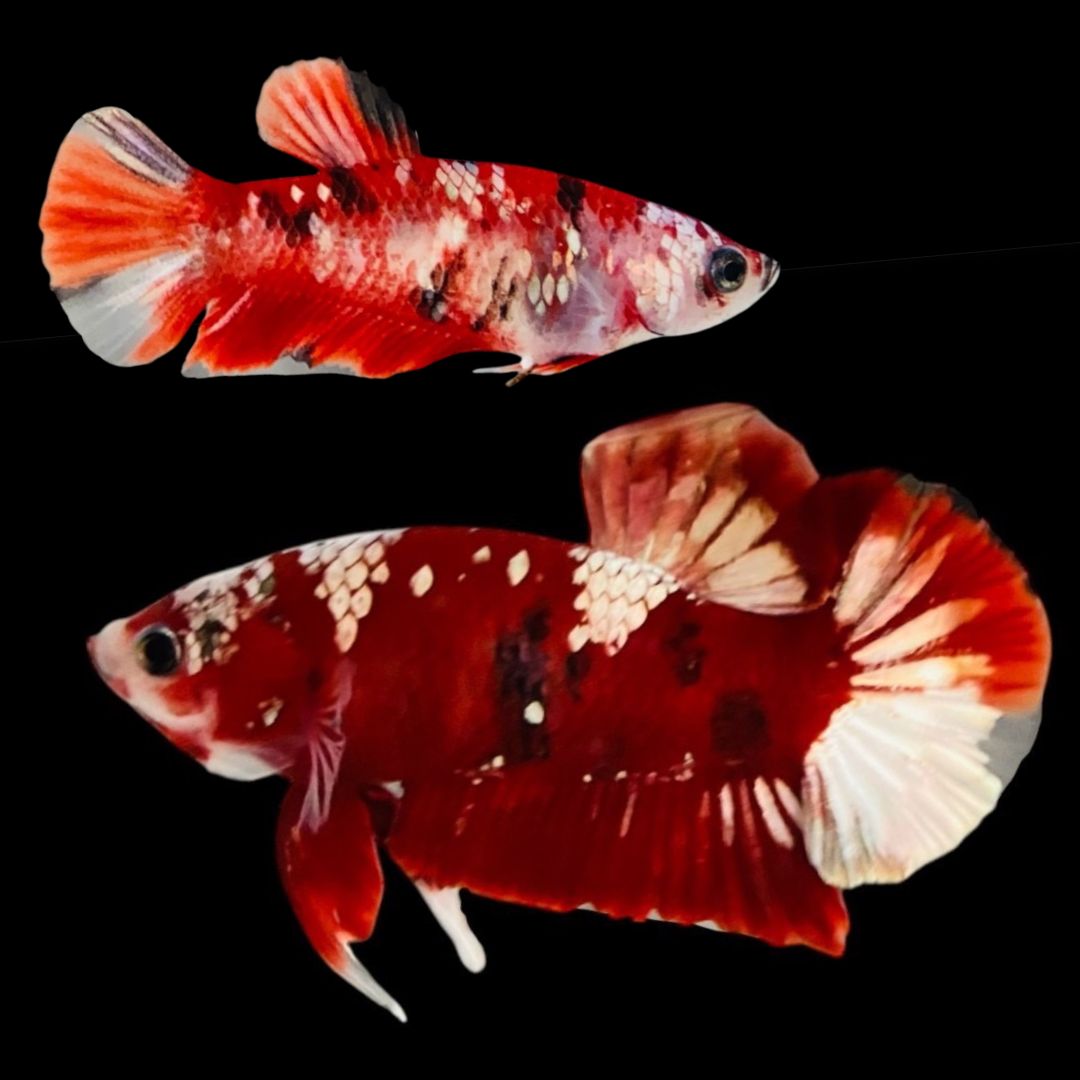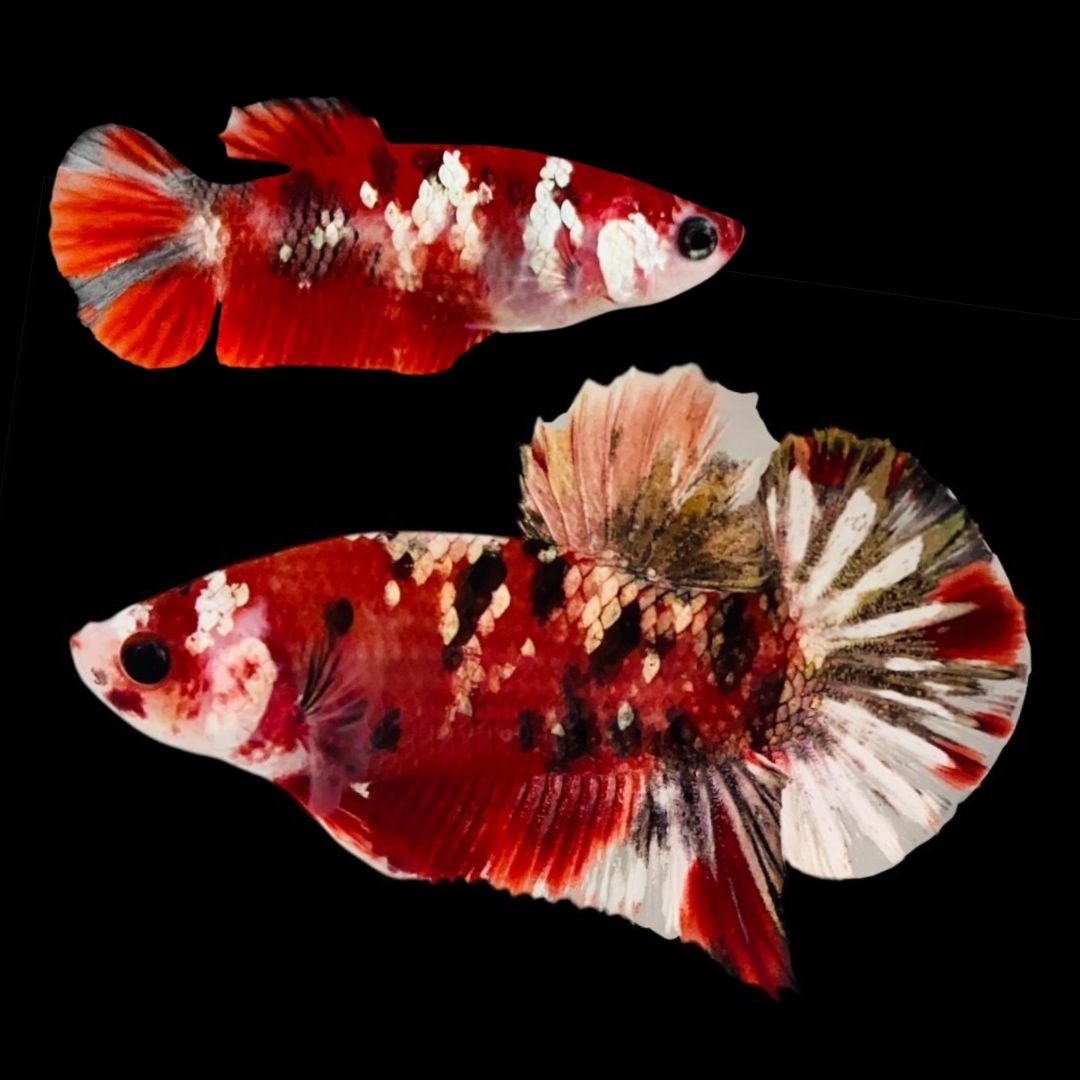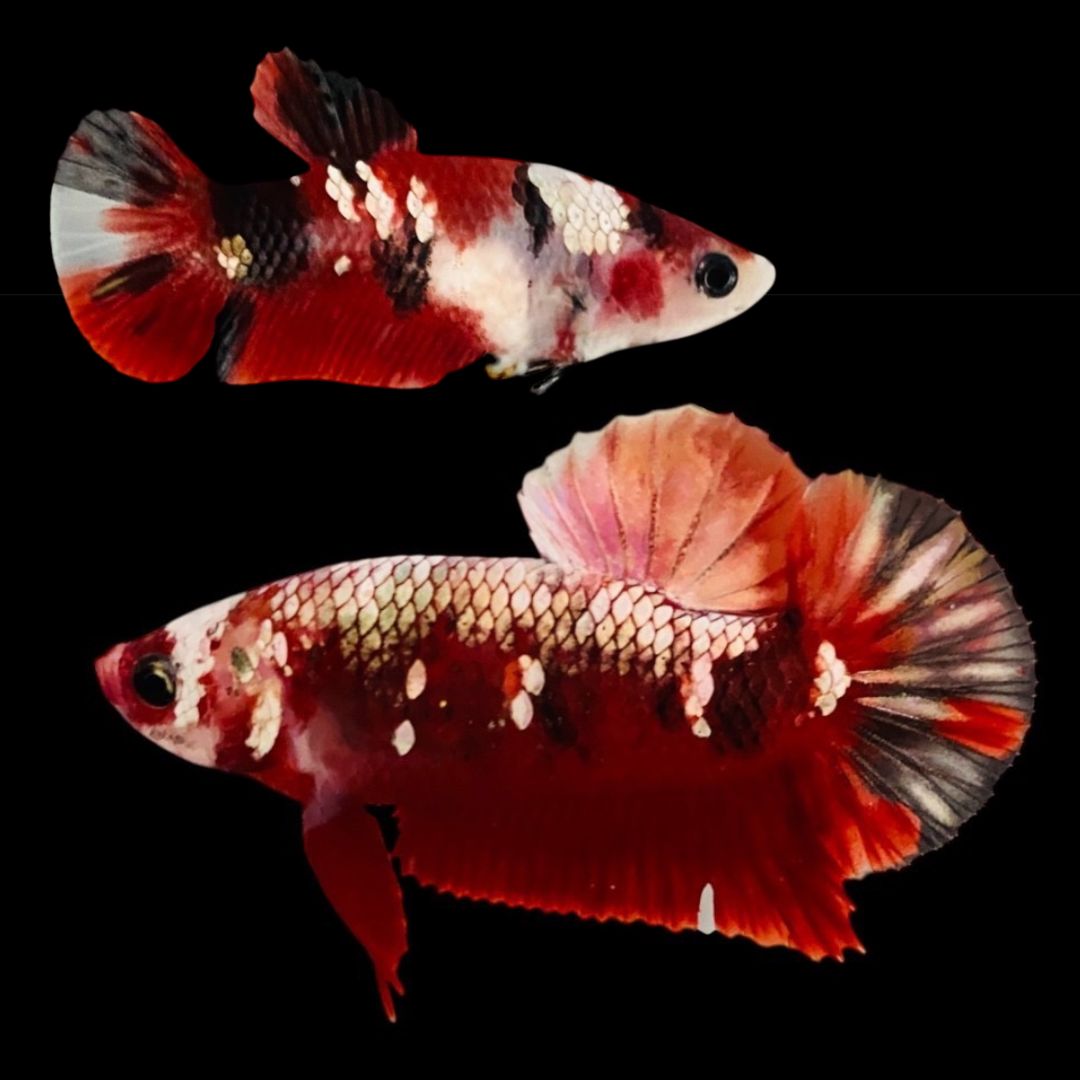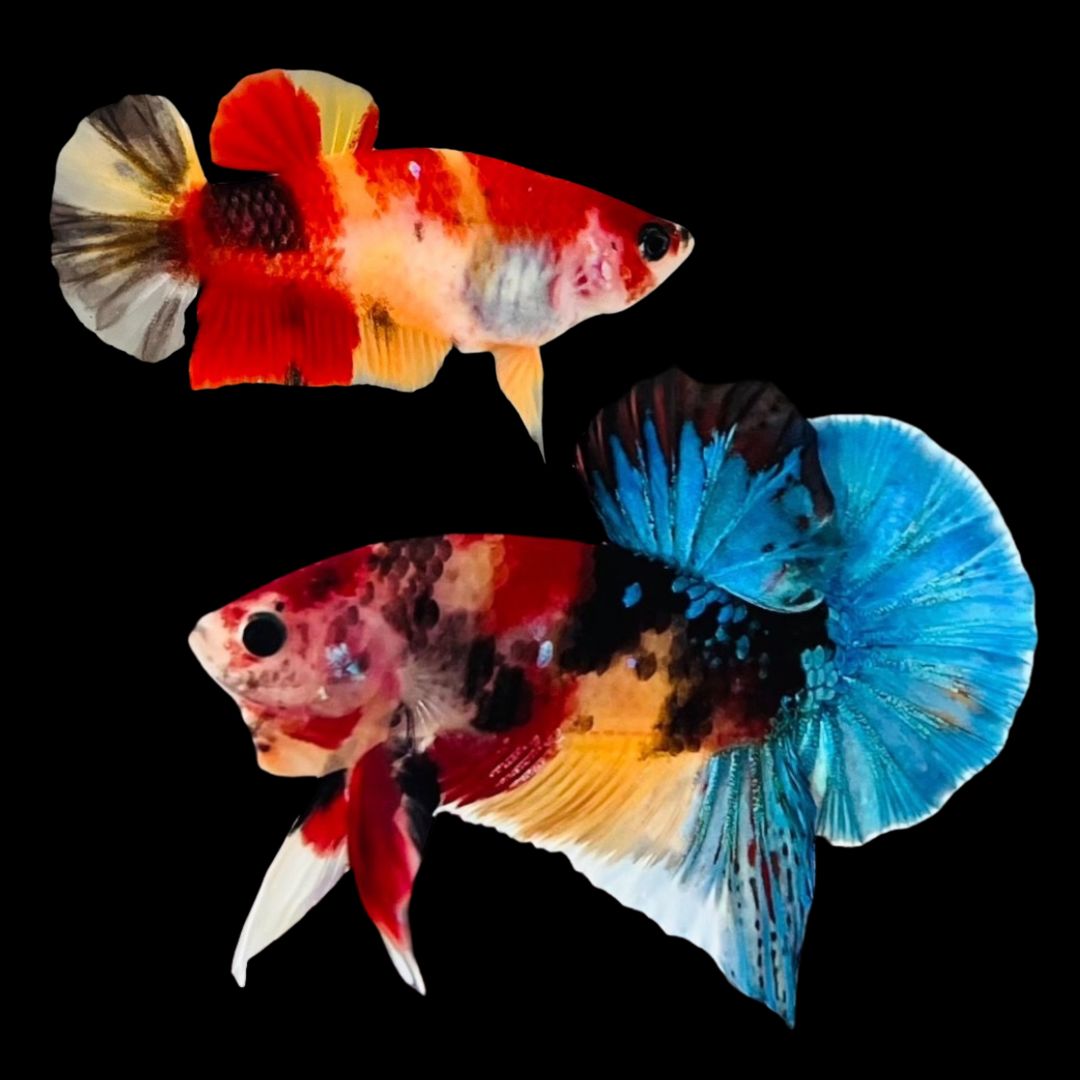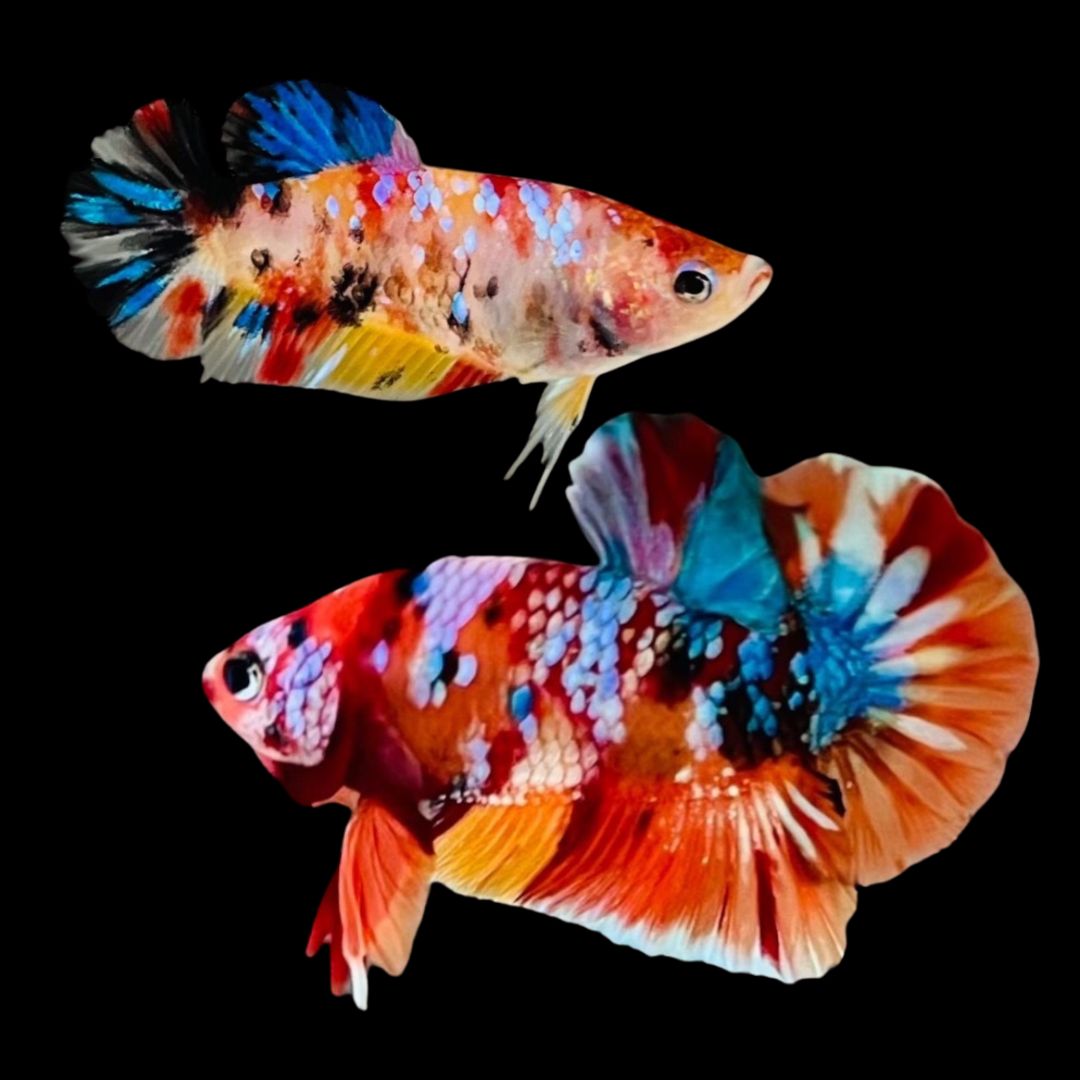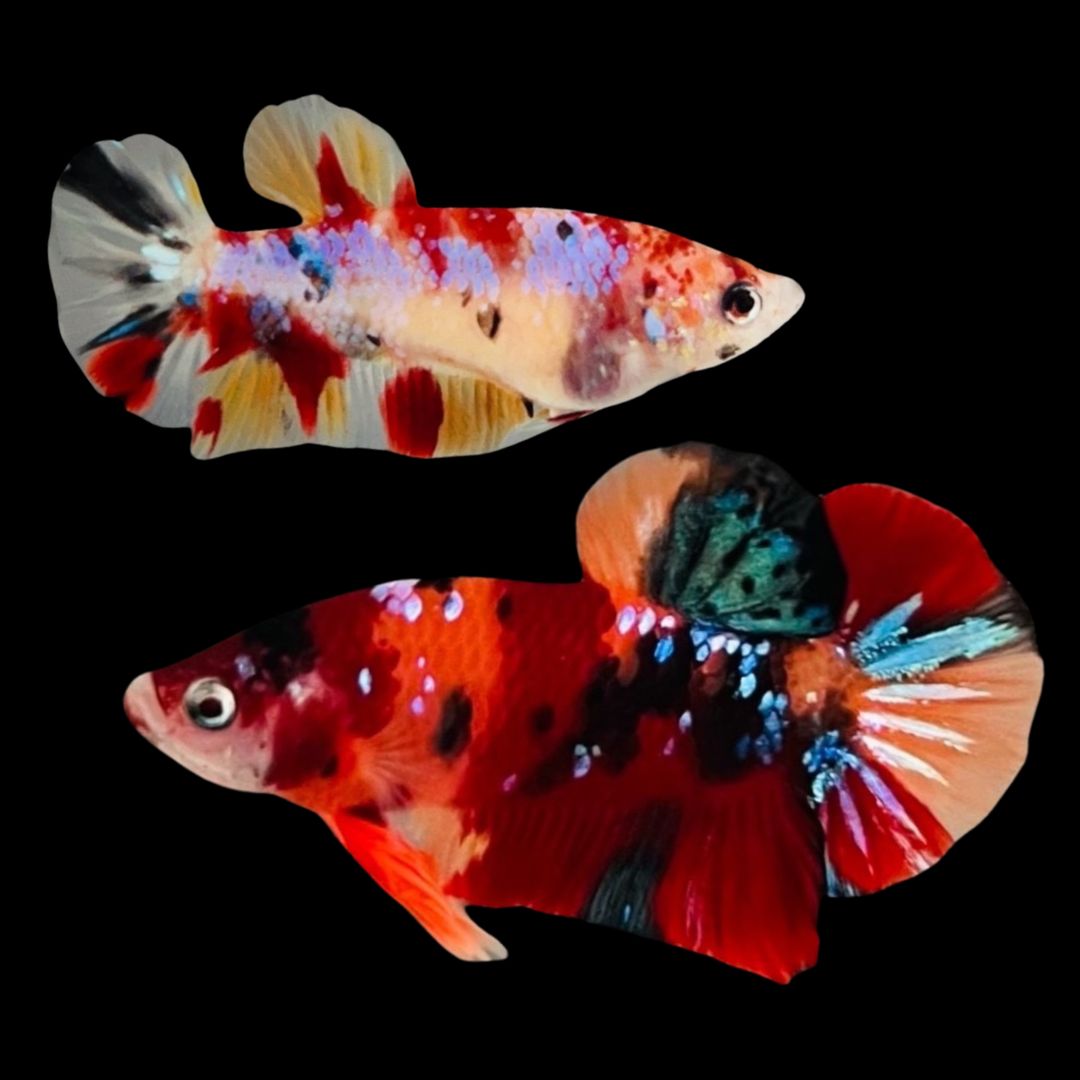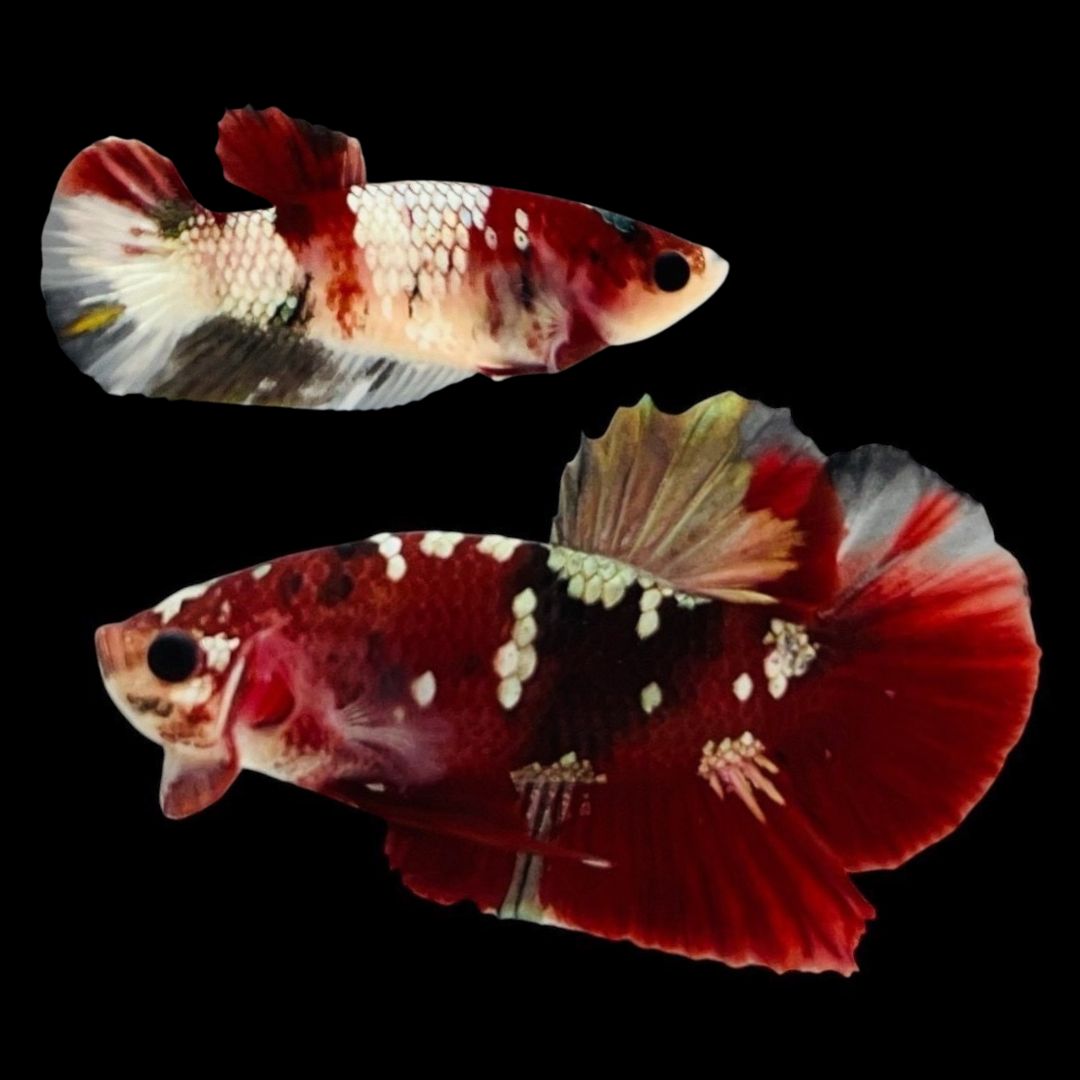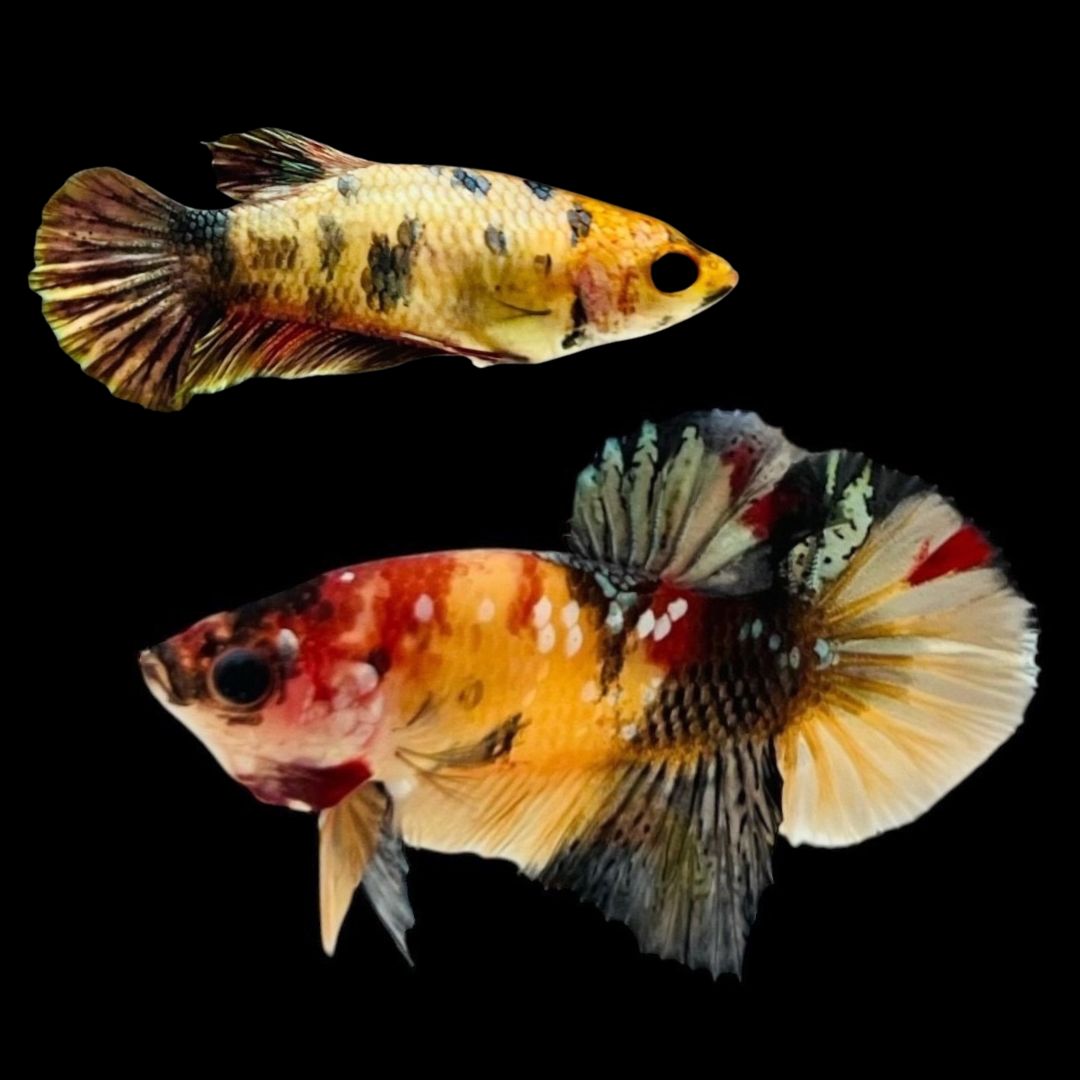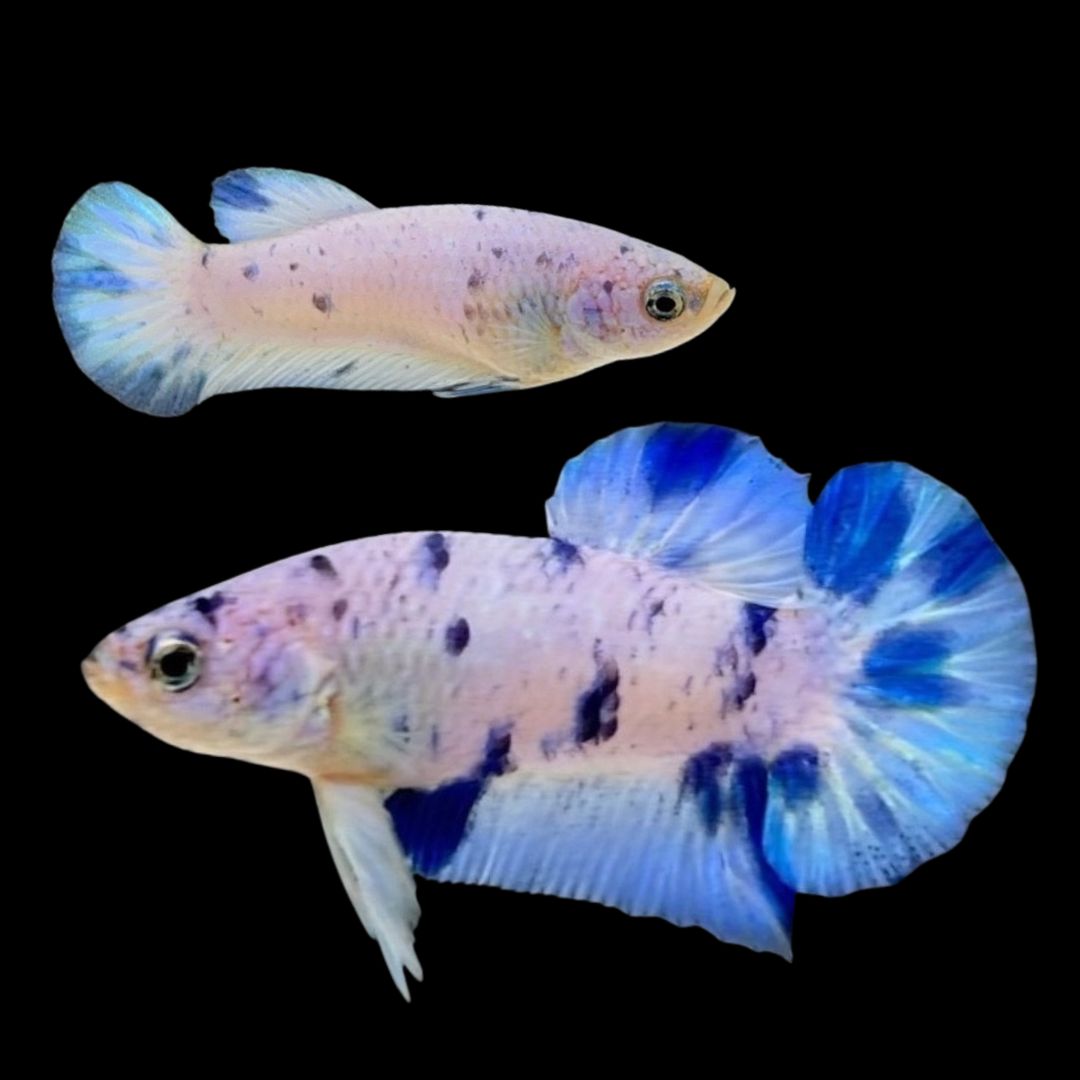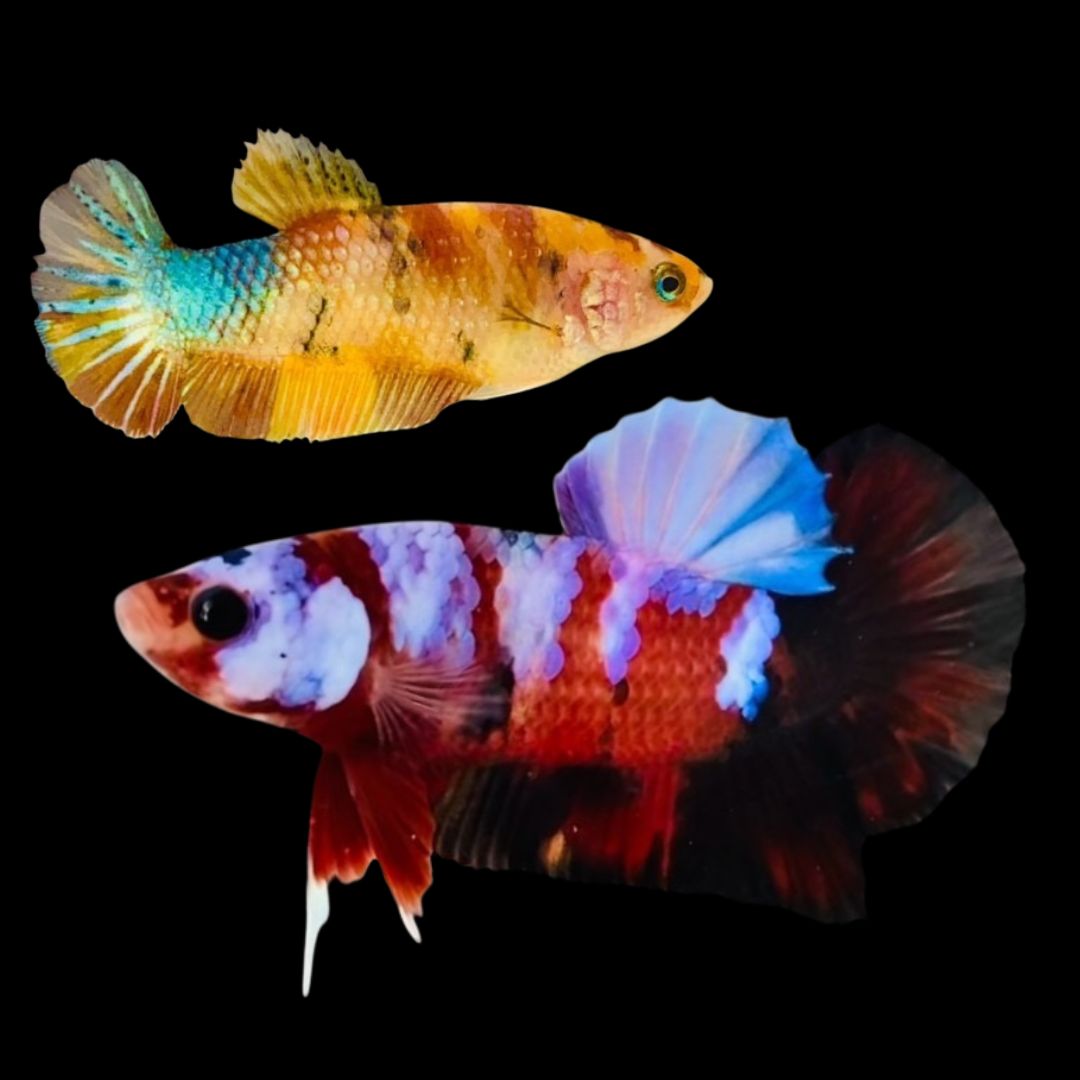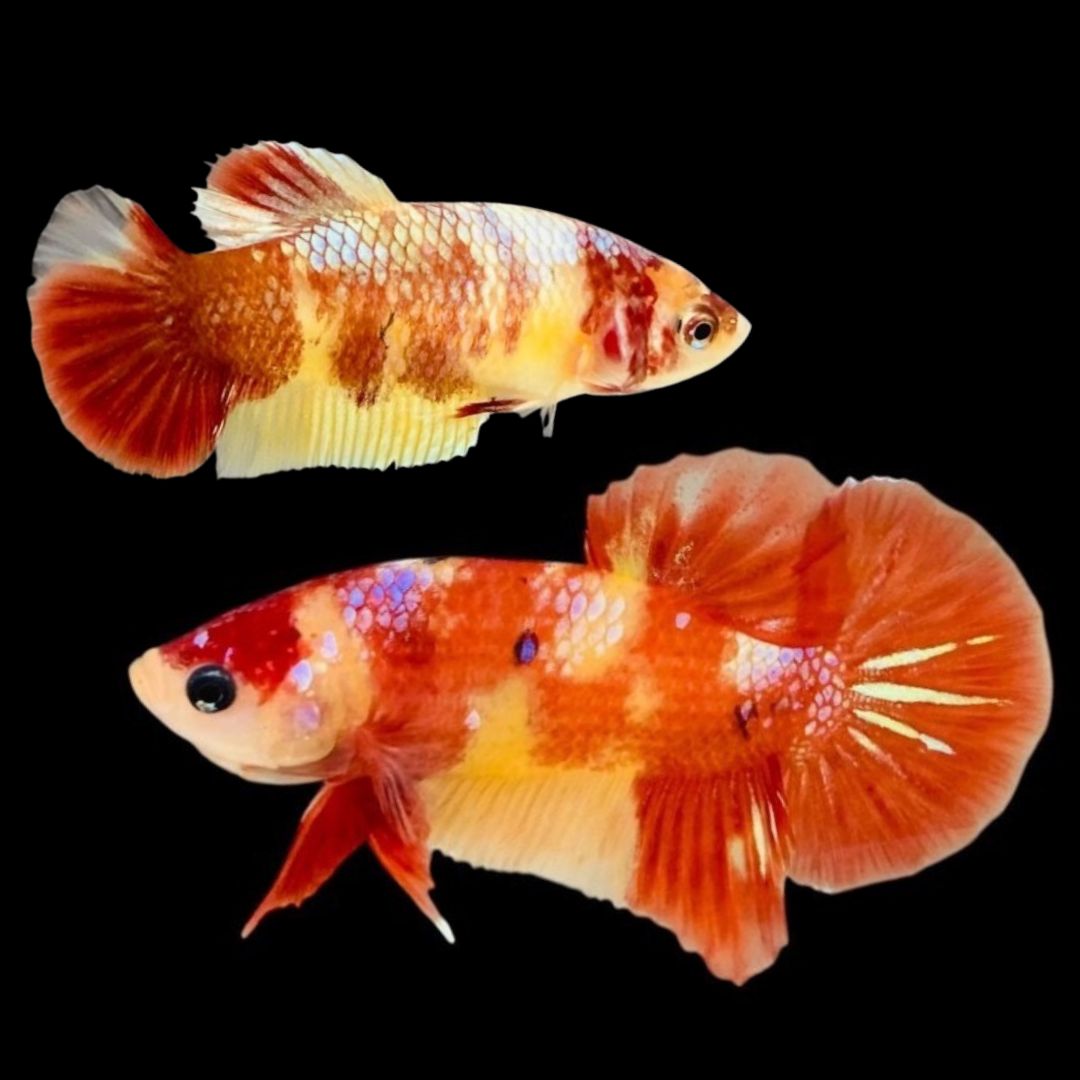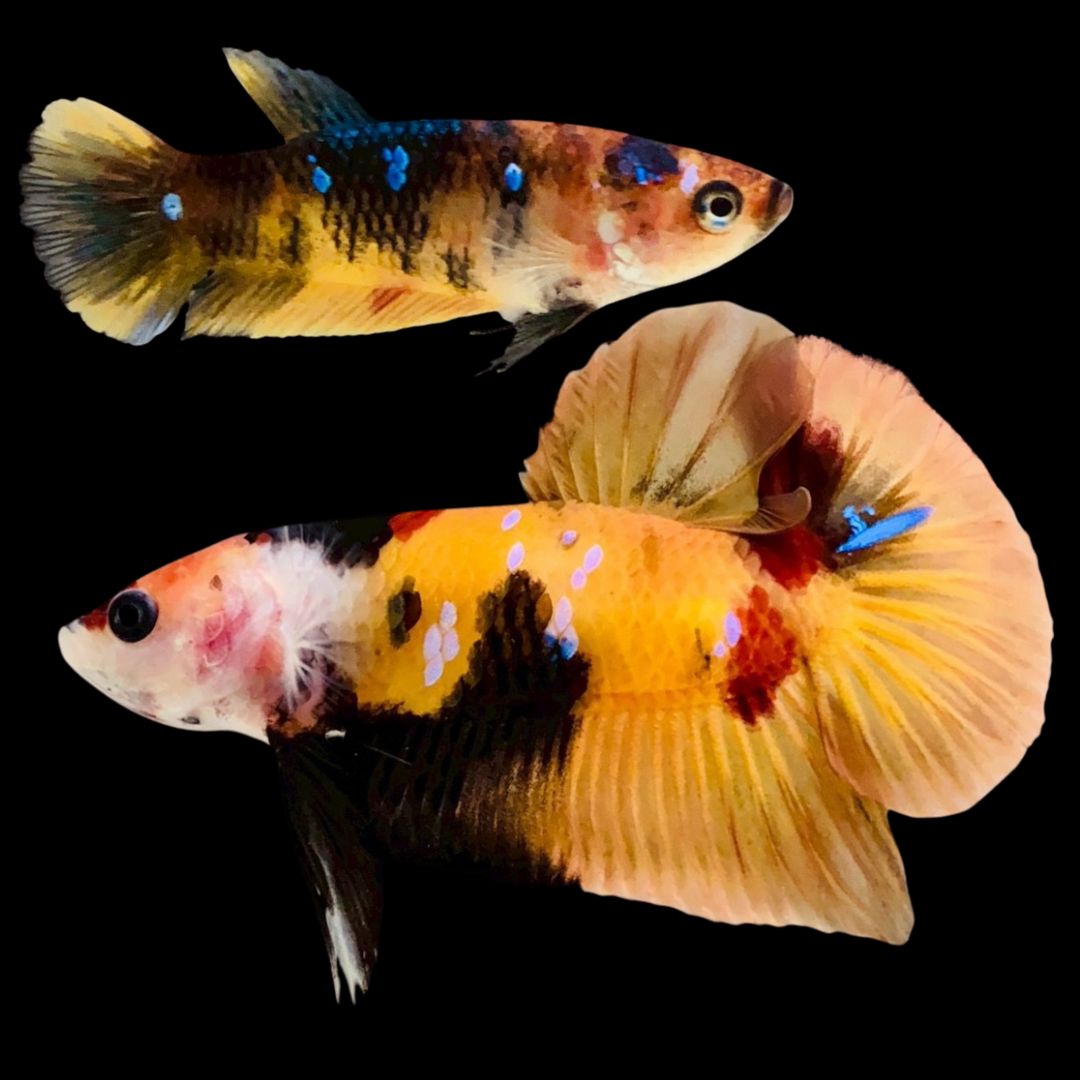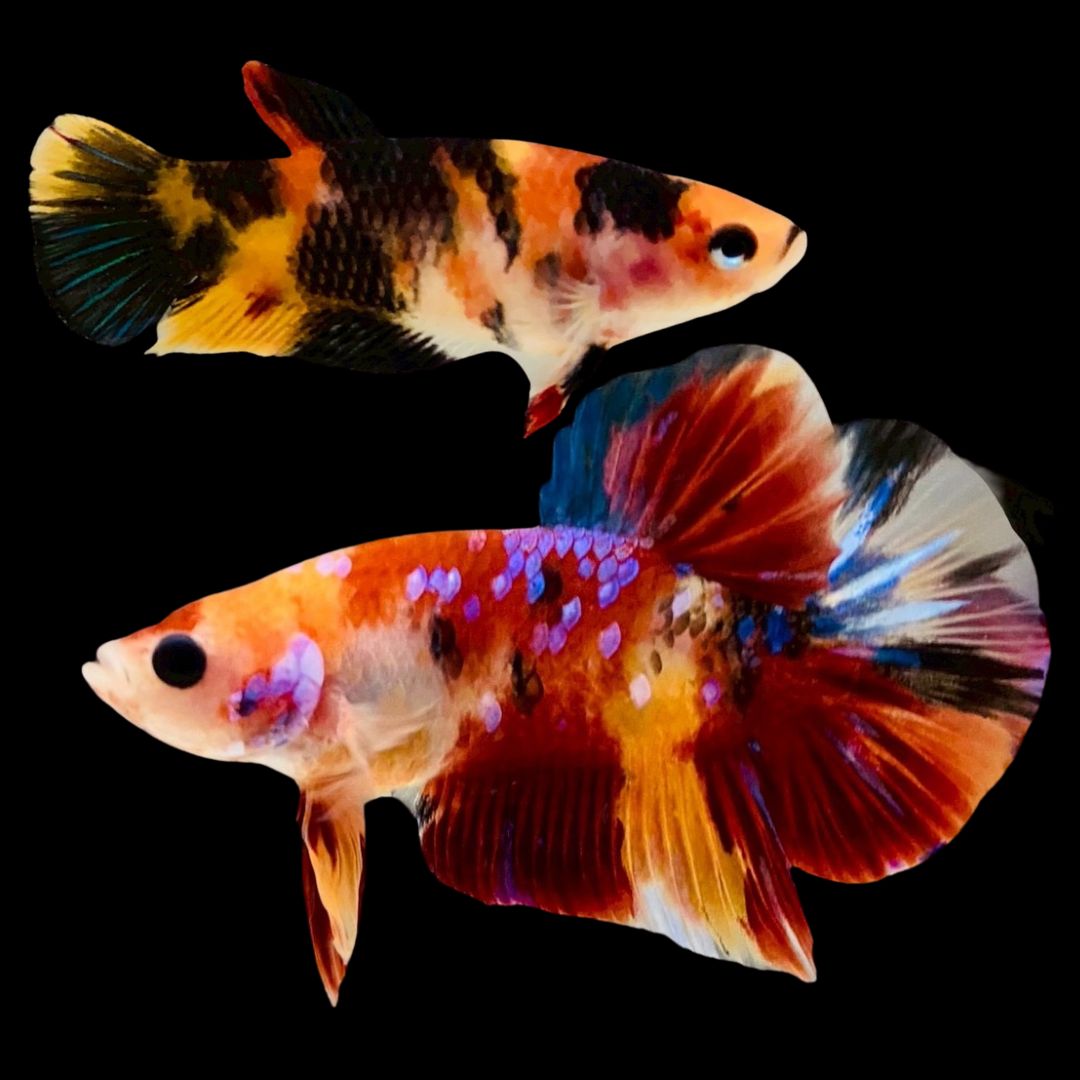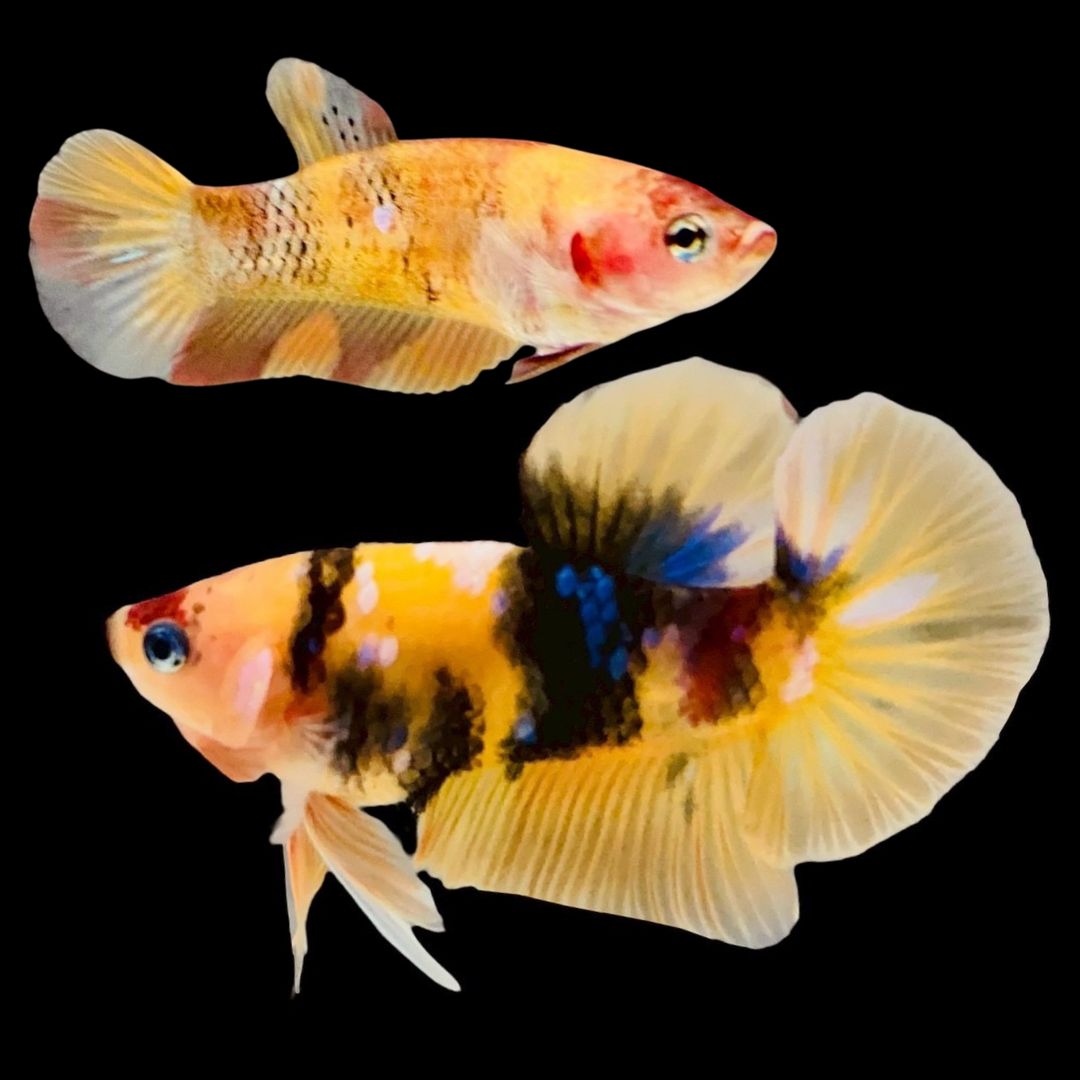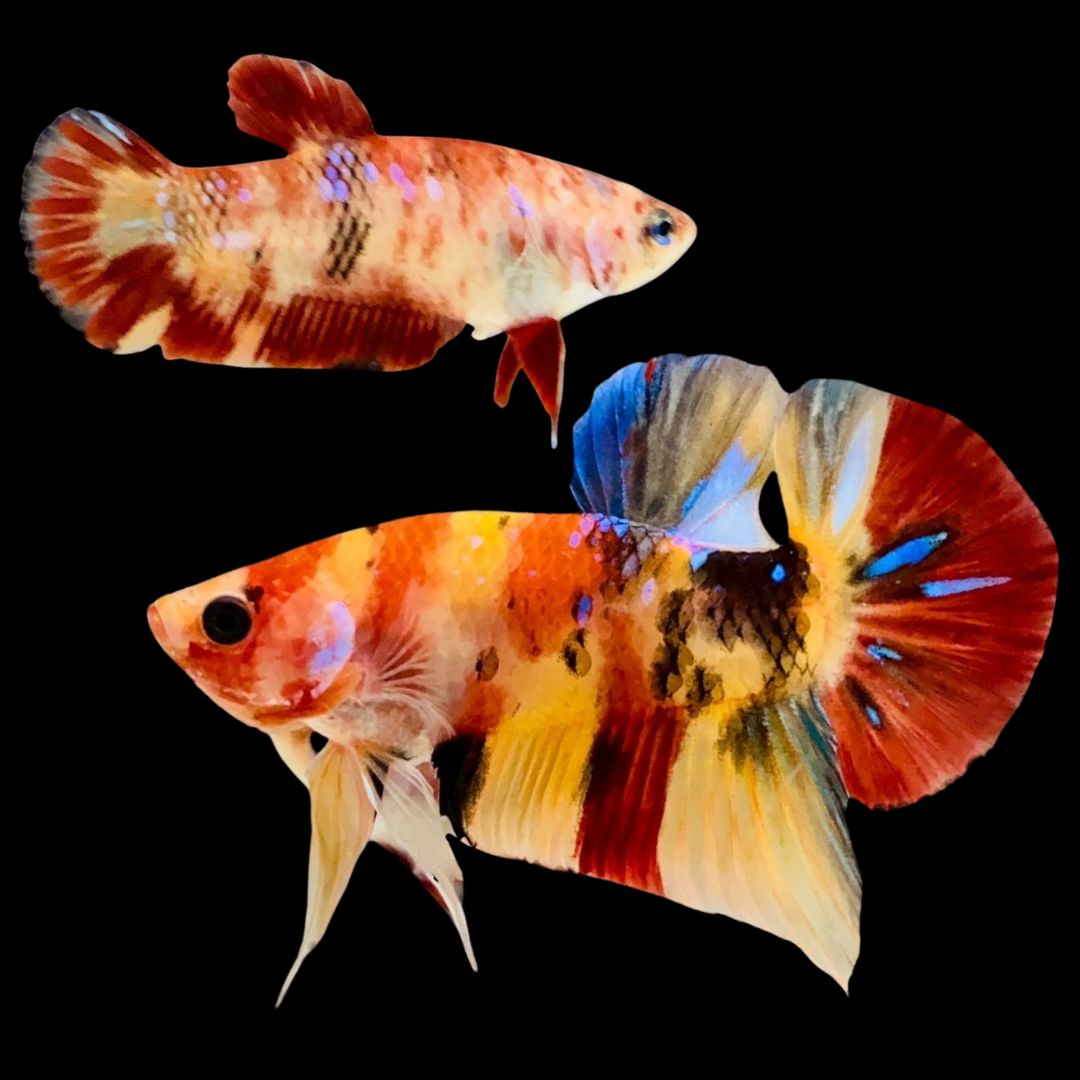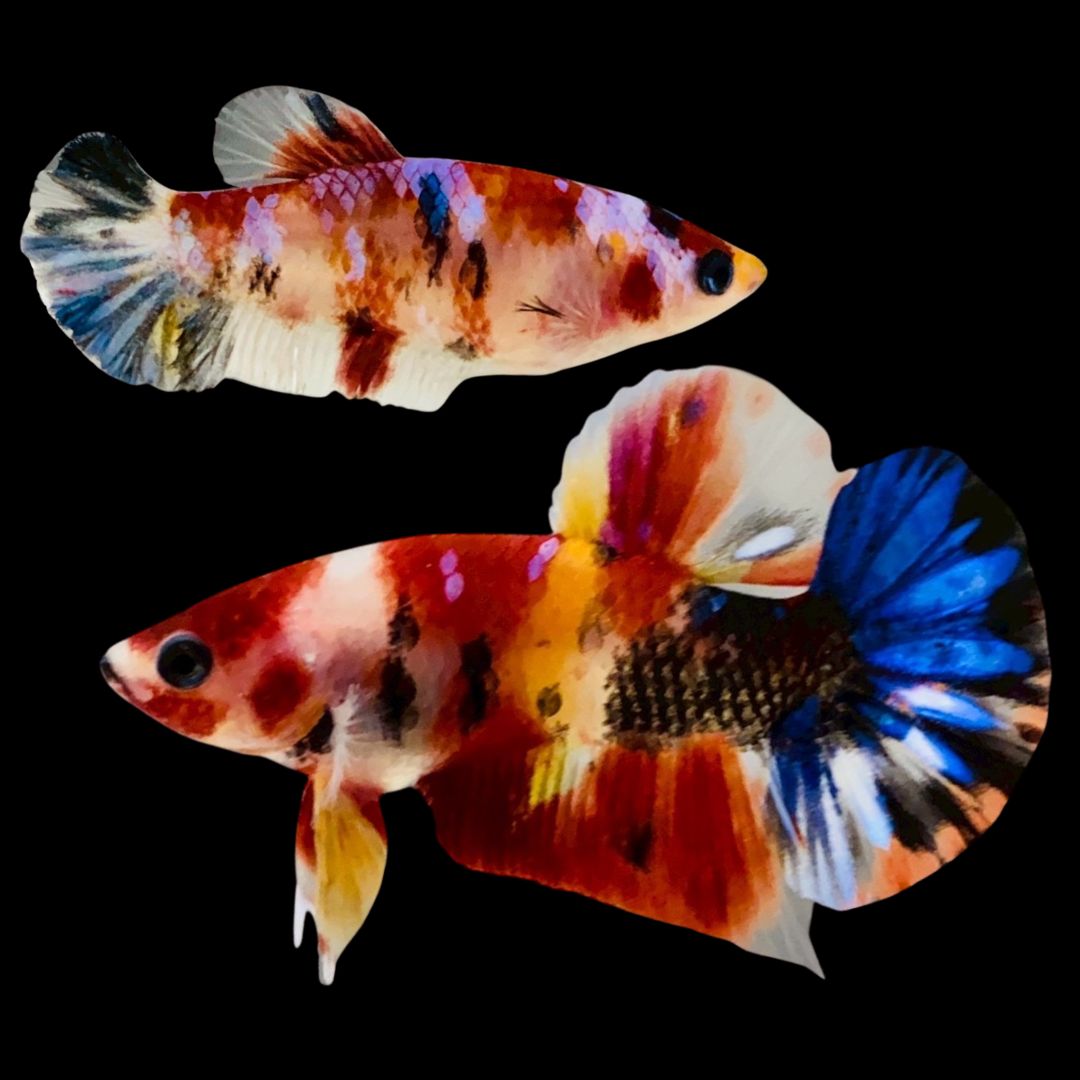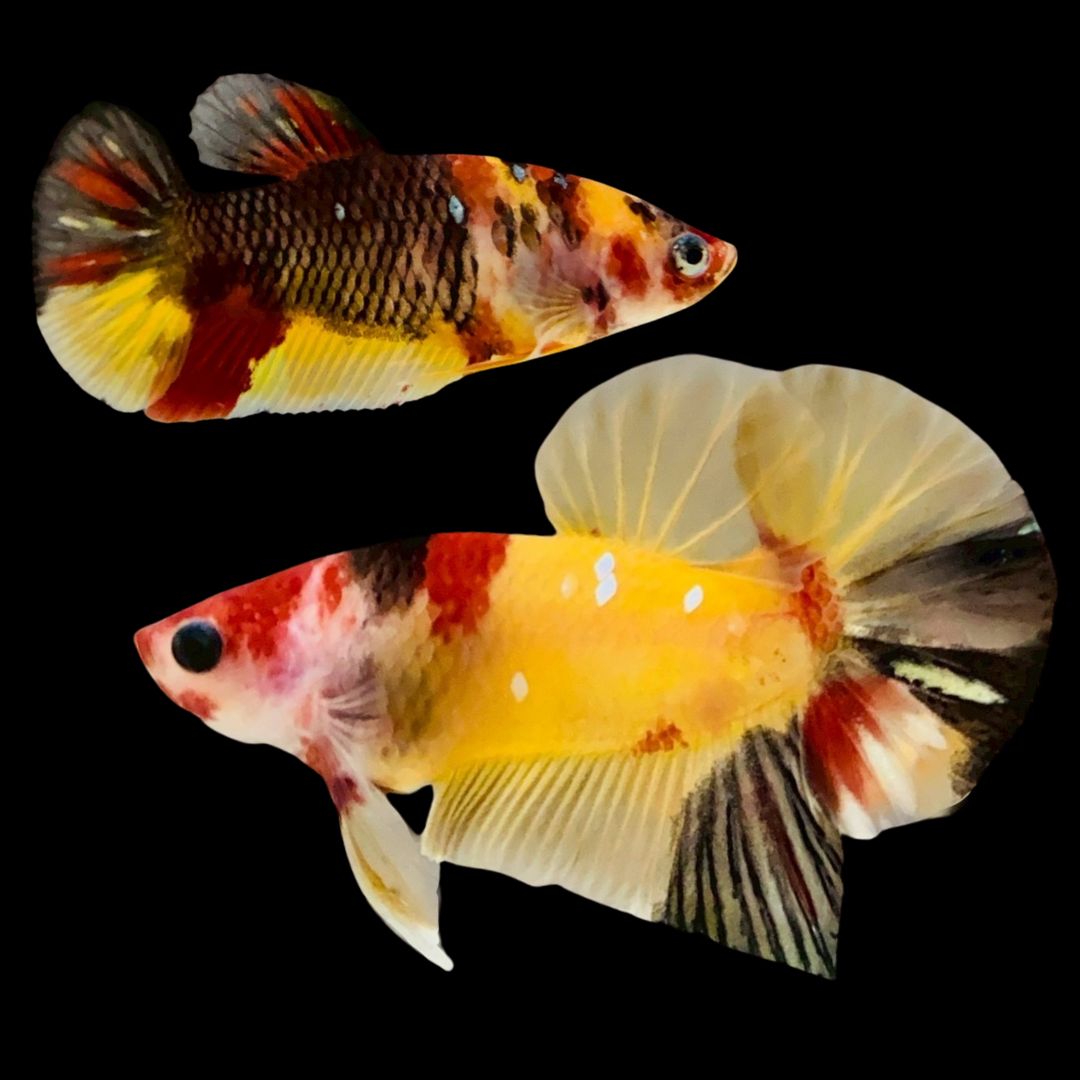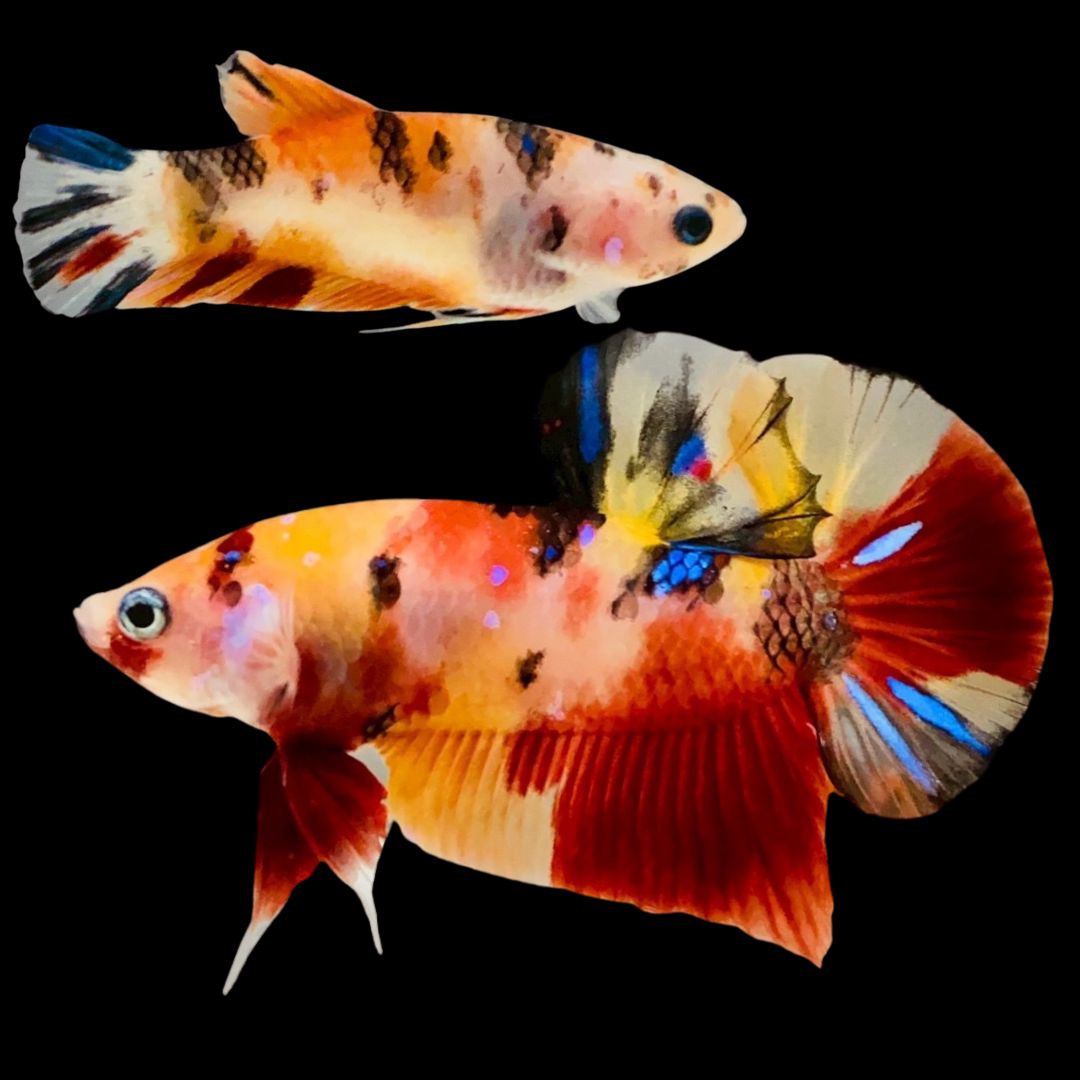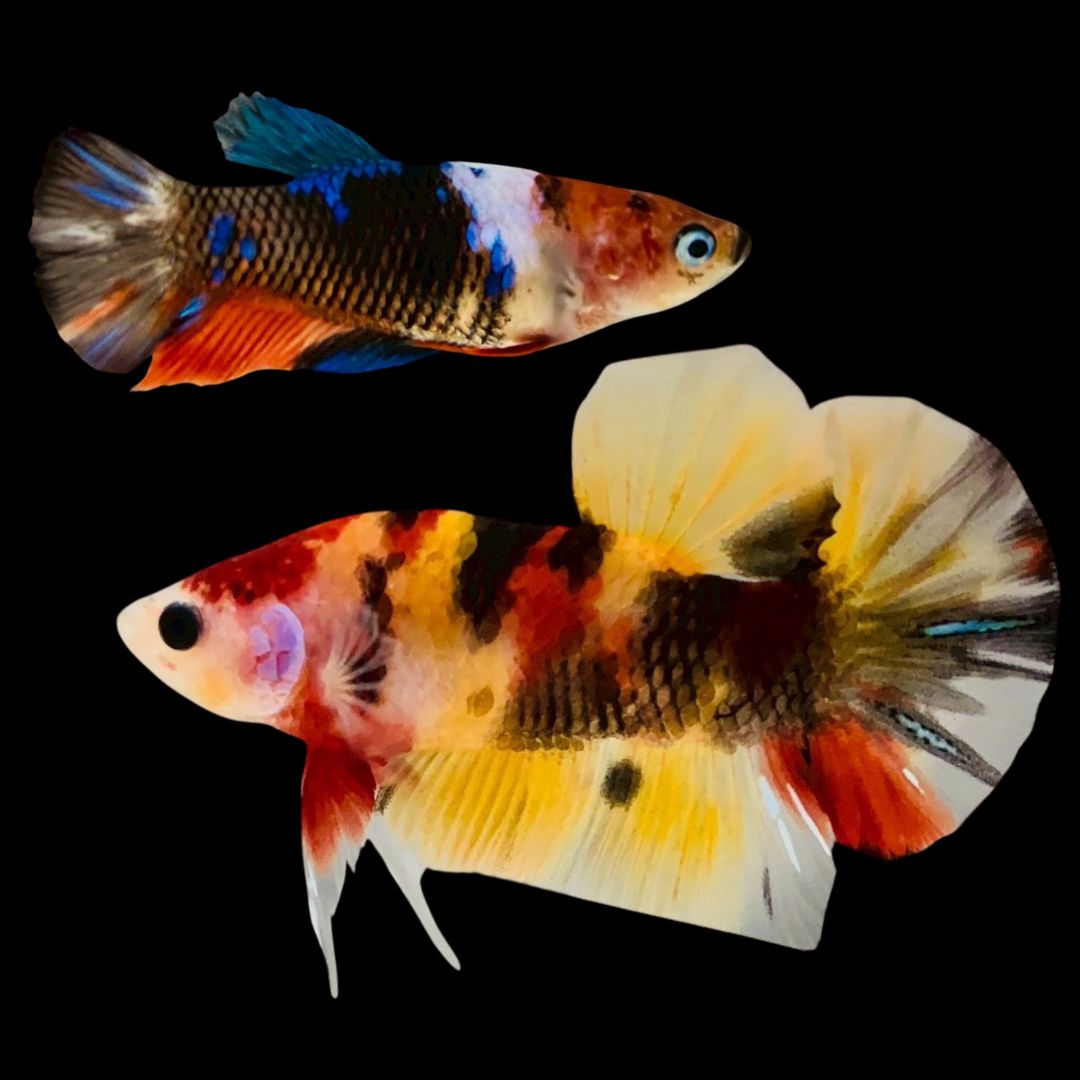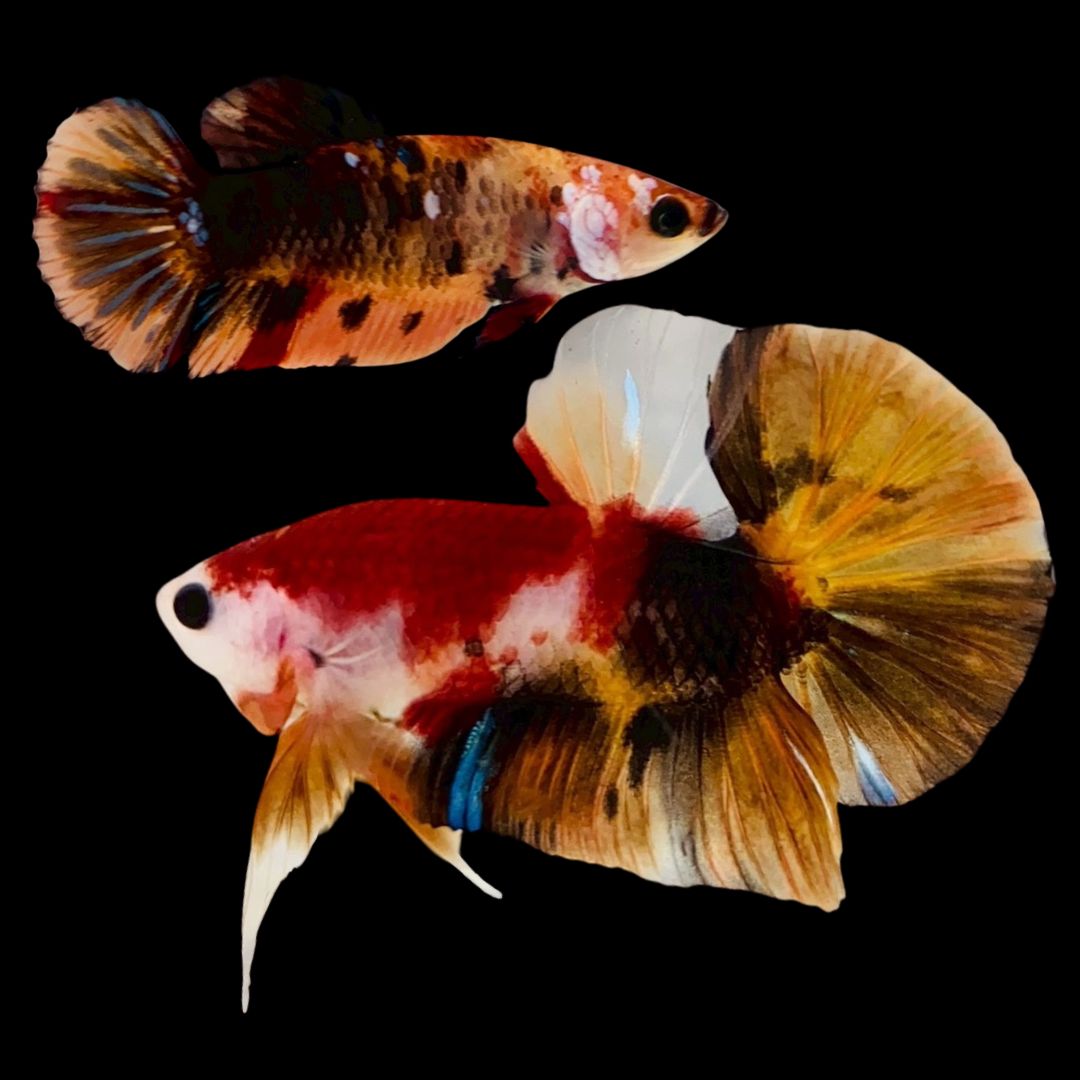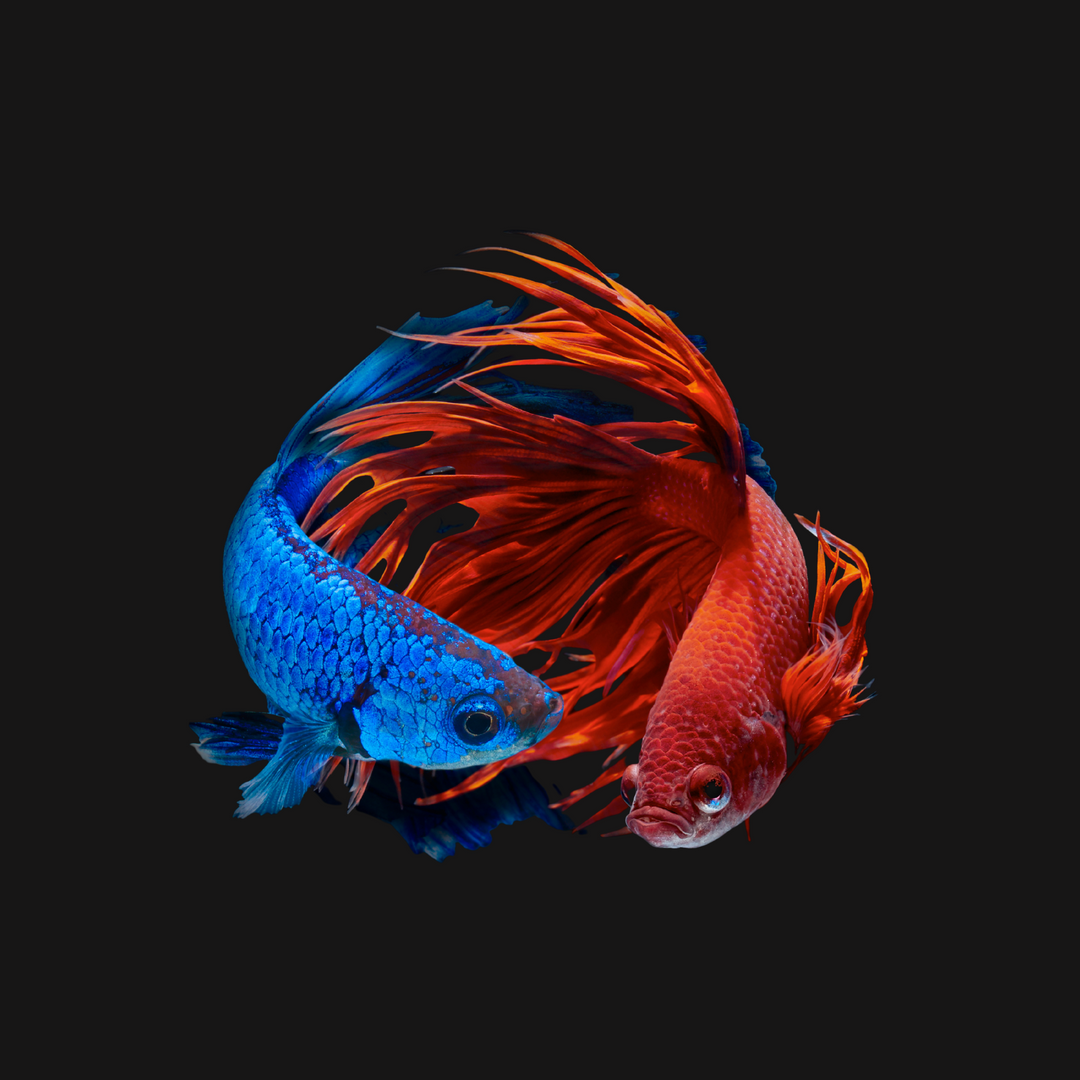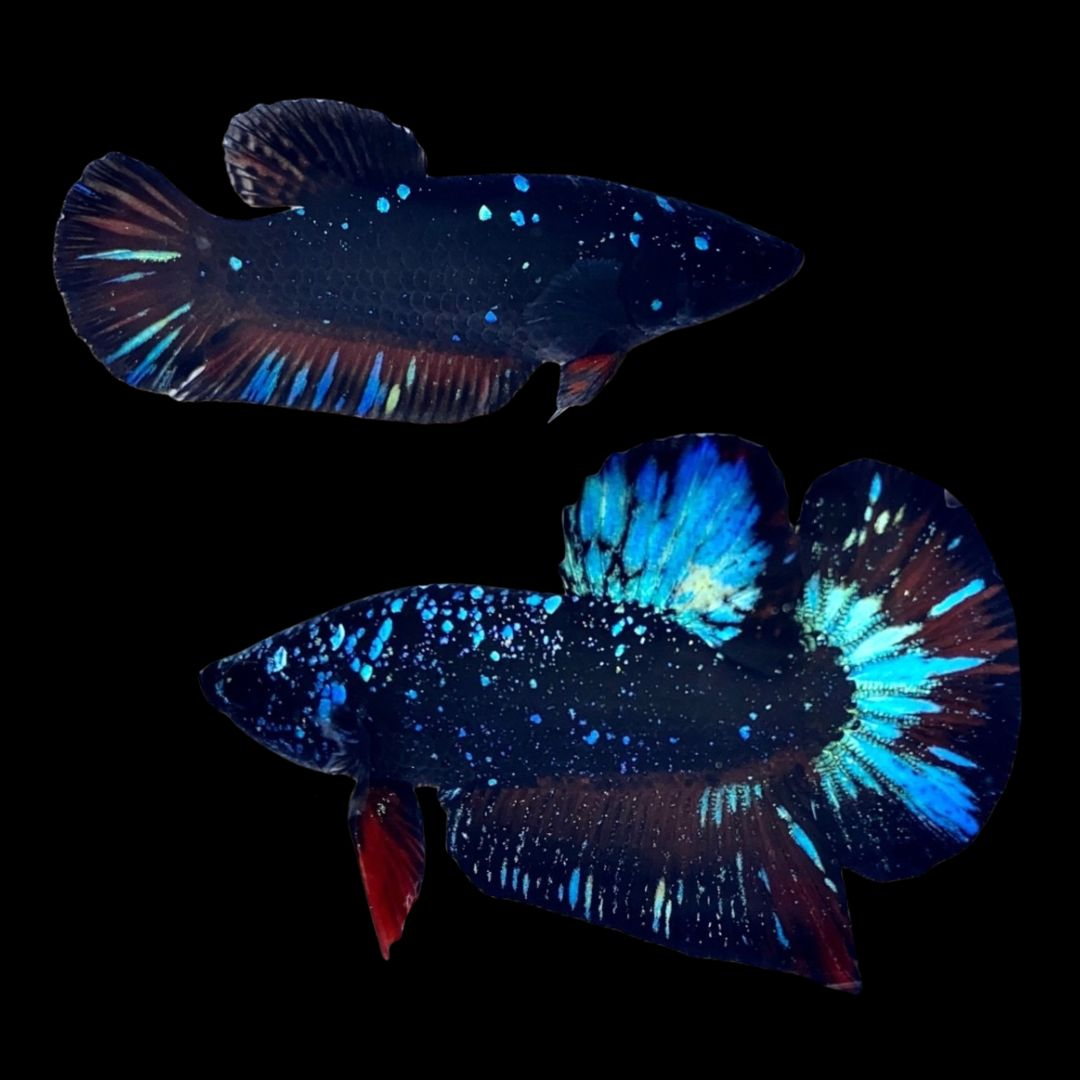
Pair
FAQs
How To Breed Betta Fish
Setting up a betta fish breeding tank involves creating a suitable environment for the fish to mate and lay eggs. This includes maintaining warm water temperatures, providing hiding spots, and ensuring a shallow water depth. It's important to have a separate space for the female to retreat to, as the male can become aggressive during the breeding process.
The breeding of betta fish begins with introducing a male and female in the same tank, followed by the male building a bubble nest. After courtship, the female releases eggs, which the male fertilizes and places in the bubble nest. Post-breeding, the male typically takes care of the eggs until they hatch.
The betta fish mating process involves several steps. First, condition both the male and female bettas with high-quality food. Then, introduce them in a breeding tank, where the male builds a bubble nest. Once the female shows readiness, they will mate under the nest, after which the male will fertilize and care for the eggs.
When looking for a betta breeding pair for sale, it's important to choose healthy, mature fish. The pair should be vibrant in color and active. Ensure that you are buying from a reputable breeder who can provide information about the fish's health and breeding history.
To understand how to breed betta fish, one must first condition the fish with a nutritious diet to ensure they are healthy for breeding. Next, introduce the male and female in a betta fish breeding tank with a warm, stable environment. The male will build a bubble nest for the female to lay her eggs, which he will then fertilize and care for.
Yes, a proper betta breeding tank setup requires creating a conducive environment for mating. This includes a shallow tank with warm water, a hiding place for the female, and a calm area for the male to build his bubble nest. Good water quality and a peaceful environment are crucial for successful breeding.
For betta fish breeding care, it's important to provide a nutritious diet, maintain optimal water conditions, and monitor the fish for signs of stress or aggression. After the eggs are laid, the female should be removed to prevent her from eating the eggs or disturbing the male who is taking care of the nest.
Our Legacy
We work tirelessly for 30 years to uphold the high standards set by our Thai ancestors and fellow breeders, ensuring that each and every Betta Fish for sale we produce is of the highest premium quality and meets the expectations of our customers. When you buy live betta fish online from us, you're not just purchasing a beautiful and captivating pet. You're also becoming a part of a long and rich history, and joining a community of people who appreciate and value the beauty and wonder of these amazing Betta Fish.
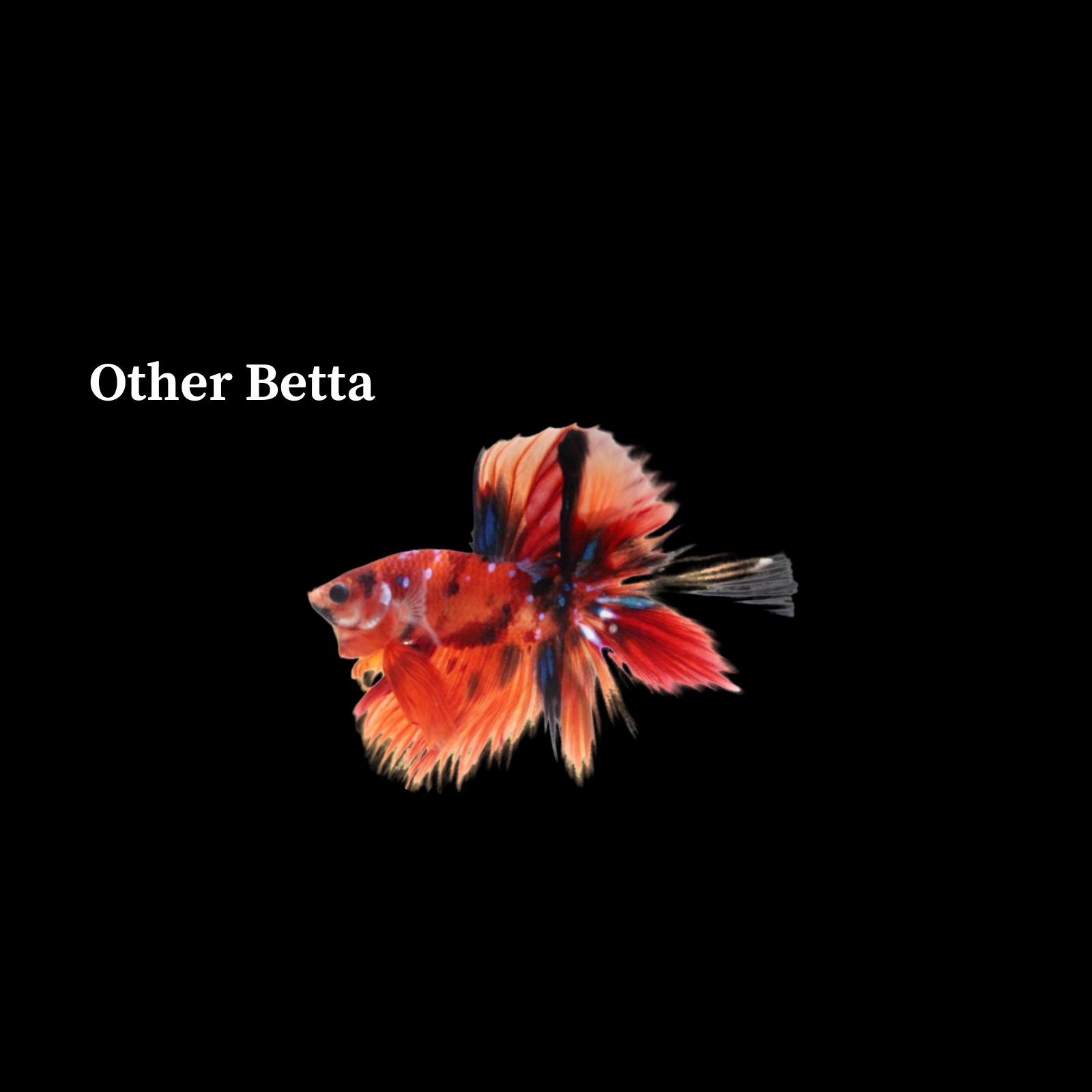

Tips and Secrets for Breeding Betta Fish
Betta fish are ready to breed when they display certain behaviors. The male will become more territorial and start building a bubble nest. The female's body will appear fuller, indicating she is carrying eggs. Look for vertical stripes on the female's body, which is a sign of breeding readiness.
Successful breeding of betta fish is indicated by the male building a bubble nest and the female displaying vertical breeding stripes. After mating, the female releases eggs, which the male fertilizes and places in the bubble nest. The presence of eggs in the nest is a clear sign of successful breeding.
When selecting a betta breeding pair, it's crucial to choose healthy, vibrant fish with clear signs of vitality. The male should have a well-built bubble nest, and the female should be responsive but not overly aggressive. It's also important to ensure they are of breeding age and size.
The betta fish breeding cycle, from introduction to hatching, can take about a week. After the eggs are laid and fertilized, they typically hatch within 24-36 hours. The male will continue to care for the fry until they are able to swim independently, usually within a few days.
Breeding Siamese fighting fish can be challenging due to their aggressive nature. It's important to carefully monitor their interactions to prevent injury. Another challenge is ensuring the fry's survival, which requires a stable environment and appropriate food once they start swimming independently.
Yes, you can find betta breeding pair for sale through various online platforms. It's vital to purchase from reputable breeders or stores to ensure the health and quality of the fish. Make sure to inquire about the pair's health history and breeding experience. A great example of such a place is Thailand Betta Fish.
In the betta fish mating process, the male plays a crucial role. He builds and maintains the bubble nest, entices the female to spawn, fertilizes the eggs, and then cares for them until they hatch. The male betta is responsible for safeguarding the eggs and ensuring their survival in the early stages.
The best environment for a betta breeding pair involves a calm, warm tank (78-80°F) with shallow water. The tank should have hiding places for the female and space for the male to build a bubble nest. Clean, well-filtered water and a stress-free environment are essential for successful breeding.
Ensuring the health of your betta fish breeding pair involves providing a balanced diet, maintaining optimal water conditions, and regular health checks. Avoid overcrowding and keep the breeding tank clean to prevent diseases. Observing their behavior regularly helps in early detection of any health issues.
Common mistakes in how to breed betta fish include not acclimating the fish properly, inadequate tank conditions, and poor water quality. Neglecting the dietary needs of the breeding pair or not separating the male and female post-breeding can also lead to problems.
A betta breeding pair should be fed a varied diet consisting of high-quality betta pellets, frozen or live foods like bloodworms or brine shrimp, and daphnia. A nutritious diet is key to ensuring their health and enhancing their breeding potential.
Managing the betta fish breeding process in a community tank is challenging. It's recommended to have a separate breeding tank to avoid stress and aggression from other tank inhabitants. If breeding in a community tank, provide ample space and monitor interactions closely to ensure the safety of the breeding pair and other fish.
Breeding a betta fish breeding pair in a small tank is not recommended. A small space can lead to increased stress and aggression, making the breeding process difficult. A larger tank (at least 10 gallons for breeding) provides a safer and more comfortable environment for both fish.
Signs that a betta fish breeding pair is not compatible include persistent aggression from either fish, lack of interest in each other, or if the male consistently destroys the bubble nest. In such cases, it's best to separate them and try with different partners.
Water quality is crucial in the betta fish breeding process. The water should be clean, well-filtered, and at a stable temperature (78-80°F). Poor water quality can lead to health issues and decrease the likelihood of successful breeding.
If your betta fish breeding pair is not spawning, first ensure that the tank conditions are ideal and that both fish are healthy. Sometimes, changing the environment slightly, offering a varied diet, or giving them more time to acclimate can encourage spawning. Patience is key in the breeding process.
After betta fish eggs are laid, the male will typically take over their care, placing them in the bubble nest and guarding them. It's essential to maintain water quality and keep the tank calm and undisturbed during this period. The female should be removed to prevent her from eating the eggs.
Keeping a betta fish breeding pair in a community tank presents challenges like potential aggression from other fish, stress due to overcrowding, and difficulty in monitoring the breeding process. A separate breeding tank is generally recommended for better control and success.
Enhancing the success rate of your betta fish breeding pair involves providing a stress-free environment, a nutritious diet, and ensuring that both bettas are healthy and of breeding age. Regular monitoring and maintaining optimal tank conditions are also key factors.
When introducing a betta fish breeding pair, acclimate them slowly to the breeding tank, ensure they are well-fed, and observe their behavior closely. Providing hiding places for the female and space for the male to build a bubble nest is essential.
Handling aggression in a betta fish breeding pair involves monitoring their interactions closely and providing adequate space and hiding spots. If aggression persists, separate them to prevent injury and consider trying with different partners.
To ensure the health of Alien Bettas, it's imperative to maintain optimal water conditions, offer a balanced diet, quarantine new aquatic additions, and consistently monitor for any signs of illness or distress, taking prompt action at the first indication of potential health issues.
Keeping Alien Bettas healthy means having water conditions just right! They prefer soft water, with hardness levels between 3 to 6 dH, and a slightly acidic to neutral pH level, between 6.8 and 7.4. A stable temperature between 76-80°F is crucial; use a reliable heater to avoid fluctuations. Regular water tests are important; there should be zero ammonia and nitrites, and nitrate levels should be below 20 ppm. Don’t forget to infuse the water with Malabar leaves—it’s mandatory for their well-being and gives the water a tea-colored tint. Avoid strong currents; a simple sponge filter and air pump can provide adequate oxygenation. If using tap water, remove harmful chlorine and chloramines with a specialized de-chlorinating agent. Regular attention and care to the water condition ensure your Alien Betta remains vibrant and thrives!
While Alien Bettas aren't overly demanding in terms of lighting, a well-balanced light spectrum can undoubtedly accentuate their vibrant colors and metallic sheen. Using lights designed for planted aquariums can illuminate their hues effectively, making them even more captivating. Subdued lighting works best as it brings out their brilliant coloration without making it look washed out.


